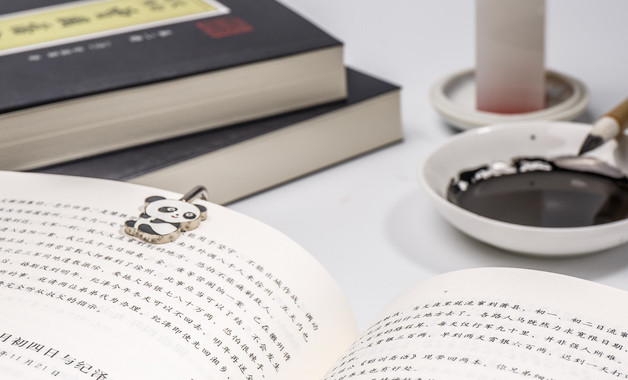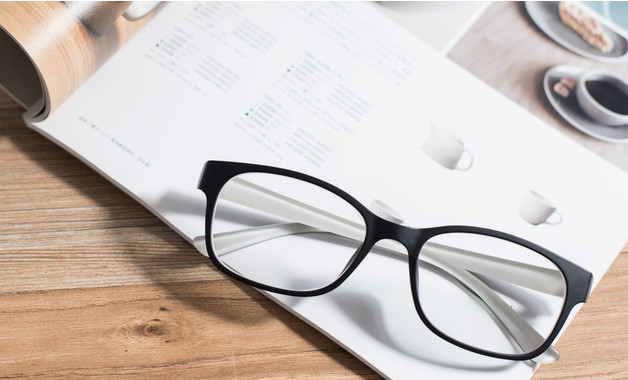- 目录
-
第1篇旅游景点英语导游词 第2篇山东省有名的旅游景点导游词开头范文 第3篇北戴河旅游景点导游词 第4篇澜沧江旅游景点导游词 第5篇贵州旅游景点导游词范文 第6篇丽江古城旅游景点导游词 第7篇乌镇旅游景点导游词 第8篇旅游景点300字导游词范文 第9篇昆明旅游景点导游词 第10篇福建旅游景点导游词范文 第11篇苏州寒山寺旅游景点导游词 第12篇是湖北三峡大坝旅游景点的导游词 第13篇北京天安门旅游景点导游词 第14篇旅游景点导游词100字怎么写 第15篇北京旅游景点英文导游词范文 第16篇张家界金鞭溪旅游景点导游词

第1篇 旅游景点英语导游词
旅游景点英语导游词,不会写的,不妨看看小编为大家分享的英文导游词,希望你们喜欢呀。欢迎阅读借鉴。
石林旅游景点英语导游词
the stone forest lies about 80 miles to the southeast of kunming. a geological phenomenon, the stone forest was a vast expanse of sea during the paleozoic era——some 270 million years ago. later, the movement of tectonic plates altered the earth’s crust, causing the sea to recede and its limestone bottom to appear, thereby forming land.due to the constant seeping ofrain through the cracks in the limestone, some of the stone formation dissolved and the fissures broadened, producing a group of great sculptures of different shapes, all molded by nature.
in the midst of the forest, there is a huge rock screen on which two words——stone forest——are engraved in official script (in a calligraphic style typical of the han dynasty, 206 b.c.-220 a.d.). among the scenic sights is the 'sword peak pond' with jadeite-colored water so clear that one can see the bottom of the pond. other astonishing sights include 'figure of ashima,' 'shi ba xiang song' (its name originating in the chinese love story, 'liang shanbo and zhu yingtai'), and 'lotus peak.'
the splendor of the stone forest is enhanced by the local customs of the native sani people (who are part of the yi minority). sani people are industrious and hospitable——and unconstrained. sani women are expert at spinning, weaving, and embroidering. they like to wear rainbow-colored headgear and bright-colored dresses. the young people especially are very good singers and dancers. every day at sunset, under the moonlight, boys and girls gather at the village platform. while the boys play the three-stringed plucked instruments, the girls clap their hands and dance the strong-rhythmed traditional 'a’xi (ah-shi) dance in the moon' with great enthusiasm. if you happen to witness the event, you will be invited to join in the festivity.
note that every lunar year, on june 24th, the sani people celebrate their national festival——the torch festival. on that day, the entire stone forest is permeated with a celebratory atmosphere. there are traditional performances of wrestling and bull-fighting. finally, when the land is enveloped in the curtain of night, the young men (holding torches in their hands) run after the young women to propose marriage in the light of colored lanterns.
吉林雾凇英语导游词
ladies and gentlemen;
welcome to my hometown jilin city. and i am the tour guide of china national tourism administration you can call me vera. or miss zhang , and on my left hand is our driver mrs. li he have more than 20 year driving experiences, he will keep our safe.
ok everyone there are few minutes before we reach the ten miles dike, now i will give you a brief introduction about jilin rime, the rime of jilin city is said to be a symbol of the spring in winter ,being together with the guilin landscape ,yunnan stone forest and three gorges of the yangtze river, it is called the four meteorological wonders in china ,and actually ,china has the earliest record of rime in the world which is also commonly known as” the mist attached to trees” by local people .
now i will introduce how jilin rime comes into being ,up going 15 kilometers upstream from the jilin city along the songhua river is the famous fengman power station, in winter when the water passes through the hydraulic group ,it gets warmer and the temperature keeps at around 4 centigrade in spite of the coldness and the steel –like ice on the lake ,since the river water holds great heat energy it doesn't freeze for as long as ten miles ,water vapor rises constantly from the water surface and the whole river appears to be misty ,given that there are pines, poplars and weeping willows along the dykes the water vapor freezes around the trees when encumbers coldness, of course under the effect of atmospheric pressure. wind direction and temperature .because of this special formation, jilin rime can last a rather long time and it happens frequentlyin winter season . what's more ,the best time for sightseeing is from the late december to the next february.somtime there could be more than 60 times of rime –formation in a single winter.
people usually divide the process of appreciation into three stages; watching the mist at night, enjoying the rime in the morning and appreciation, a silver and magic world appears just in front of us .all of the tress along the river are covered by rime and the branches of weeping willows like silver necklaces. as for the last stage, we are talking about the time when the rime begins to fall. usually, after nine o'clock in the morning, the rime will fell down from the trees. this begins by little amount and then more and more is falling down. when the flying rime falls on our heard and shoulders, we feel especially fresh and cool.
ok everyone now we have reached the songjang road please put you hats and gloves together go fellow me to enjoy the wonders of the rime
大理苍山洱海英语导游词
fellow friends:
hello! toured the
dali old city, initially has feltthis humanities landscape profoundness; now we watch the cangshanerhai, understands the dali's america of scenery.
first, we ride the yacht to go to the erhai park. the erhai park othername group mountain park, is l ocated the hsiakuan city northeast 2kilometers place groups mountains. north it near ocean waves wan qingerhai, west and cangshan southend setting sun peak relative. whennanzhao country, here is king's deer park. in 1976 here newly wardedoff for the park, occupiesdi 1,600 chinese acres. on the mountain has thezoo and the plant nursery flower-bed, broadly plants the dali areaeach kind of precious flower different plant, is very good rests placeof the tour.
now the pleasure boat to the erhai park near the sea causeway, we cameashore to the ship, this is under the group foot of a hill binhai tourarea along 270 multistage stone steps ascendslevel on, we arrive the summit.everybody looked that, this curls upwardsangle upturned eave pavilion is looks thesea building, the eave hangs from above the plaque, submits a writtenstatement: jade er silver dark green ', the black bottom goldcharacter, vigorous is classically elegant, it is the chinese inadmiration of somebody's fame painter wu zuoren's writing skill. looksthe sea building is understands 'the jade er silver dark green'happiest extent, leans against a railing looks out into the distance:east side erhai vast, boundless, west cangshan is continuous,luxuriant is gray.
fellow friends, let us go on board once more, roams through to erhaiin. but i first must to everybody introduction be actually amcangshan. formerly, we in the dali city, under on the dark green footof a hill road, have not been able to look at carefully the cangshangrand appearance well. just like the ancient said 'does not know thetruth about the matter, only reason body in this mountain'; looks thesea building in the erhai park, the angle of view inclines, also onlycan see the cangshan terminal. now, unceasingly leads the way alongwith the pleasure boat, in our eye cangshan is not clearer? somepeople said that, a hengduan pulse condition great arm, the tibetplateau extended west yunnan from 'the roof of the world' to thesouth, cangshan was in this world famous sierra a cloud range branch.
cangshan, also names the diancang, is green because of its mountaincolor, the mountain apex acquires fame in vain. cangshan altogetherhas 19 peaks. this 19 peaks from the north to the south order are: thecloud makes, green, five, the lotus flower, the white clouds, thecrane cloud, three positive, the blue peak, the snowman, should behappy, the goddess of mercy, center and, longquan, the jade bureau,malone, the saint should, buddha go against, ma er, the setting sun.in 19 peaks, the malone peak is highest, elevation 4,122 meters. thecangshan 19 peaks, two peaks clamp a brook, altogether 18 brooks; eastthe mountain stream flows, pours into erhai, 18 brooks from north tosouth, the base arrangement is: south the rosy cloud moves, wan hua,the positive brook, the awn wells up, the brocade brook, the spiritspring, the white stone, the double mandarin duck, hides the immortal,mei xi, the peach brook, center the brook, the emerald, longxi, clearblue, remnant, pavilion mouth, is not positive.
the cangshan scenery by the snow, the cloud, springstone is famous. i firstintroduce cangshan to everybody the snow. after the summer needlesscangshan snow, is dali 'the love affair' four given names scenery. thesnow white cangshan snow, all previous dynasties article literatiapproves the refined language quite a lot, the folklore also many. thethe ming dynasty writer li yuanyang once praised: 'date li cangshansnow, precioustai 19 peaks'.
cangshan's cloud is the famous biography is far and wide. the cloudgathers the cloud to disperse, sometimes the pale like light smoke,sometimes is thick like splashes ink. in fluctuates varied center, what is most mysterious is 'looks the husband cloud' and 'thejade belt cloud'. so-called 'looks the husband cloud' is referswhenever the winter spring the season, the cangshan jade bureau peakregular meeting appears a lonely cloud, suddenly remembers suddenlyfalls, about flutters, if hoped if attends to. unusual occupying to anits appearance, the diancang then suddenly gets up the storm, blows toerhai. so-called 'jade belt cloud', is refers whenever at the end ofthe summer fallinitially, after rainfirst clear, between the cangshan 19 peakshalfways up the mountainside often can appear white clouds, the cloudsgatherscollects, slowly pulls open, if the pure white jade belt horizontallyties the green mountainside. is continuous dozens of miles,unexpectedly the date does not dissipate. marvelous is, 'the jade beltcloud' meets the omen agriculture abundant harvest: it appears thenumber of times to be many, same year on good crop weather. local painationality has the farmer's proverb: 'cangshan is the jade belt, thehungry dog eats the rice'.
导游词
第2篇 山东省有名的旅游景点导游词开头范文
蓬莱阁导游词
各位旅客朋友们:
大家好!
蓬莱阁是中国古代四大名楼之一,素以“人间仙境”著称于世,其“八仙过海”传说和“海市蜃楼”奇观享誉海内外。历经风雨沧桑,如今已发展成为以蓬莱阁古建筑群为中轴,蓬莱水城和田横山为两翼,四种文化(神仙文化、精武文化、港口文化、海洋文化)为底蕴,山(丹崖山) 、海(黄渤二海)、城(蓬莱水城)、阁(蓬莱阁)为格局,登州博物馆、古船博物馆、田横山、合海亭及黄渤海分界坐标等20余处景点为点缀,融自然风光、历史名胜、人文景观、休闲娱乐于一体的风景名胜区和休闲度假胜地。景区先后荣膺“全国重点文物保护单位”、“国家重点风景名胜区”、“全国创建文明行业先进单位”、“全国五一劳动奖状”、“全国旅游行业最佳诚信单位”、“全国首批5a级旅游景区”、“全国文明单位”、“中国驰名商标”、“山东省质量管理工作先进单位”、“山东省服务标准化示范单位”等称号,导游科获得“全国青年文明号”和“全国巾帼文明示范岗”等殊荣。
泰山导游词
各位旅客朋友们:
大家好!
泰山,被称为“东岳”,是世界文化遗产和世界自然遗产之一,是世界著名的地质公园,也是我国5a级旅游景区,是第一批全国文明风景旅游区示范点,位于山东省泰安市中部。主峰玉皇顶海拔1545米,气势雄伟磅礴,有“五岳之首”、“天下第一山”的之称。
泰山风景以壮丽著称。重叠的山势,厚重的形体,苍松巨石的烘托,云烟的变化,使它在雄浑中兼有明丽,静穆中透着神奇。最为有名的是“泰山四大奇观”。古人以“泰山北斗”来喻指人道德高、名望重或有卓越成就为众人所敬仰的人。
曲阜孔庙导游词
各位旅客朋友们:
大家好!
曲阜孔庙,是祭祀我国著名思想家和教育家孔子的本庙,坐落于孔子的故里——山东曲阜城内,又称“阙里至圣庙”,始建于鲁哀公十七年(西元前478年),历代增修扩建,经两千四百余年而祭祀不绝,是中国渊源最古、历史最长的一组建筑物,也是海内外数千座孔庙的先河与范本,和相邻的孔府、城北的孔林合称“三孔”。
曲阜孔庙以其规模之宏大、气魄之雄伟、年代之久远、保存之完整,被建筑学家梁思成称为世界建筑史上的“孤例”,现为世界文化遗产、中华人民共和国全国重点文物保护单位,与北京故宫、承德避暑山庄并列为中国三大古建筑群。
大明湖导游词:
“你还记得当年大明湖畔的夏雨荷吗?”大明湖也因还珠格格的热播而被国人熟知。大明湖是济南三大名胜之一,是繁华都市中一处难得的天然湖泊,也是泉城重要风景名胜和开放窗口,闻名中外的旅游胜地,素有“泉城明珠”的美誉。它位于济南市中心偏东北处、旧城区北部。大明湖是一个由城内众泉汇流而成的天然湖泊,面积甚大,几乎占了旧城的四分之一。市区诸泉在此汇聚后,经北水门流入小清河。现今湖面58公顷,公园面积103.4公顷,湖面约占百分之五十三,平均水深2米左右,最深处4.5米。大明湖是5a级天下第一泉风景区的核心组成部分之一。
趵突泉导游词:
各位旅客朋友们:
大家好!
趵突泉被称为“天下第一泉”,位于济南市中心区,趵突泉南路和泺源大街中段,南靠千佛山,东临泉城广场,北望大明湖,五龙潭。面积158亩,是以泉为主的5a级特色园林,国家首批重点公园。该泉位居济南七十二名泉之首,也是最早见于古代文献的济南名泉。趵突泉是泉城济南的象征与标志,与济南千佛山、大明湖并称为济南三大名胜。
第3篇 北戴河旅游景点导游词
各位游客:
欢迎诸位来北戴河旅游,祝各位在北戴河度过一段轻松惬意的时光。北戴河的蓝天白云、碧海金沙、青松翠柏、绿树红墙,会让您流连忘返,终生难忘;北戴河深厚文化积淀,会让您在历史的长河之中,倾听那流传千古的故事,回味那余韵无穷的篇章。北戴河一本厚厚的书,气势恢弘,博大精深;是首长长的歌,流光溢彩,韵味绵长。请您静静地听,我给诸位细细地讲。
北戴河是秦皇岛市的一个区,面积不大,70.3平方公里;人口不多,只有6万居民。但北戴河的美丽和神秘,却拨动了古今中外多少志士仁人的心弦。千古一帝秦始皇,雄才大略汉武帝,志在千里曹孟德,一代明主唐太宗,在这里留下了他们的足迹;康有为、徐世昌、朱启钤、张学良等风云人物,在这里上演了一出出历史活剧;新中国三代领导人毛泽东、邓小平、xx和他们的战友们,在这里做出了许多关乎国家命运的重大决策。从19世纪末到1948年北戴河海滨解放,全世界几十个国家的传教士、外交官员、富商大贾、学者名流,在北戴河修建了719栋别墅,为后人留下了一个蔚然壮观、风格各异的世界建筑群。新中国成立以后,中央和各部委省市在北戴河兴建了200多家休疗养院。改革开放以来,每年都有数百万游客,来北戴河休闲度假、旅游观光。人们禁要问:为什么北戴河就有这么大的吸引力,xx多年来,让一代又代的帝王相、风云人物,梦牵魂萦,顶礼膜拜?让一批又一批的旅游者,蜂拥而至,只求一睹风采呢?这都因为北戴河的美丽。美丽的风光,吸引了无数风云人物;风云人物的到来,又为它平添了一份神秘的色彩。神秘的美丽,使美丽更富有吸引力。
北戴河的美,首先美在它的海。在18.8公里的海岸线上,沙滩和礁石,相互交错;海湾和岬角,依次排开。沙滩松软洁净,堪称北方第一。礁石造型奇特,引人无限遐思。海湾浅浅碧水,浴场沙软潮平。岬角拔地则起,观鸟观日出,此处最富吸引力。大海的开阔,教给我们学会宽容;大海的博大,激励我们不断追求。大海是我们的朋友,大海是我们的老师。人类来自大海,大海是人类永远的故乡。
北戴河的美,还美在它的山。天下的山,有的以高大雄伟而闻名,有的以挺拔险峻而著称,要想攀登它们,不是对生命极限的挑战,也是对意志体力的考验。北戴河的莲蓬山却不同,它的海拔高度只有152.1米,它把高大雄伟、挺拔险峻作为能够实现的目标,却把温柔舒缓、平步青云,作为不知不觉的过程。无论男女老少,不必气喘吁吁,慢慢走来,都能登上海滨最高峰,眺望方圆百里山川大海的旖旎风光。莲蓬山公园是一个有着80多年历史的森林公园,奇石异洞、青松翠柏、亭台阁榭、鸟语花香、把莲蓬山装点成一个有着鲜明个性的绿色,一幅气象万千的绚丽画图。
北戴河的美,更美在它的环境。北戴河常年保持一级大气质量,城市森林覆盖和人均占有的绿地面积,都居全国前列。北戴河是世界著名的观鸟地,是我们第一个候鸟保护区。“北戴河湿地”被纳入“国际湿地保护网络”。这里能见到409种鸟类,占我国现存鸟类的40%。鸟类是最有权威的自然环境鉴定师。鸟类选择的栖息地,必定环境质量最好。北戴河优美的自然环境,是大自然的造化,也是当地居民世世代代尽力保护的结果。
北戴河的美,是四了的美。它受海洋气候的调节,春光明媚,鸟语花香;夏无酷暑,水碧沙明;秋高气爽,蟹满鱼肥;冬无严寒,静谧安祥。良好的气候条件,使北戴河成为四季皆宜的旅游胜地。北戴河是我国旅游业的发祥地,它最早开发于光绪十九年(1893年)。被称为东亚避暑胜地。
北戴河属于全国人民,属于全世界,是地球母亲赐予的丰厚的礼物,是东西文化交流的智慧结晶。
第4篇 澜沧江旅游景点导游词
澜沧江是湄公河上游在中国境内河段的名称,其实它叫湄公河。以下是关于澜沧江旅游景点导游词,仅供大家参考。
澜沧江旅游景点导游词
澜沧江系国际河流,在东南亚为湄公河,是亚洲流经国家最多的河,流经中国、缅甸、老挝、泰国、柬埔寨和越南,在越南胡志明市附近注入南海,是世界第六大河,全长4900公里。国境处多年平均年水量约640亿立方米,为黄河的1.1倍。澜沧江在我国境内水能资源可开发量约为3000万kw。这条河在中国境内的流程为2198公里,境外长度2711公里。
到目前为止,各种资料上记载的关于澜沧江的源头有十几种说法,而以不同源头为起点的河流长度也有多种,估测的长度从4200公里到最长4880公里不等。发源于唐古拉山北侧的扎纳日根山脉,查加日玛峰(藏语,意为多彩的山)南坡,莫云滩深处的扎阿曲,位于东经944144、北纬334231、海拔5224米的拉赛贡玛的功德木扎山上,位于玉树州杂多县境内。遥感专家刘少创探测的结果是,澜沧江源头在青海省玉树藏族自治州杂多县吉富山,海拔5200米,地理坐标是东经94度40分52秒,北纬33度45分48秒。从这里算起,澜沧江(湄公河)的长度是4909公里。
省内干流长444.1公里,省内流域河流总长2055.2公里,流域面积37482平方公里,年径流量107亿立方米,集水面积在500平方公里以上的河流有20条。主要支流有子曲和解曲等。杂曲(藏语,意为水流众多)南流入西藏自治区,出省境处年均流量148立方米/秒,省内天然落差1544米。
澜沧江源区,河网纵横,水流杂乱,湖沼密布。杂曲河流经的地区有险滩、深谷、原始林区、平川,这里地形复杂,冰峰高耸,沼泽遍布,景致万千。
澜沧江源区气候,具有寒冷、干燥、风大、辐射强、冷季漫长、无绝对无霜期等特点。年平均气温一般在6.0℃~-4.0℃.之间,但大部分地区在0℃以下,降水空间分自有东南向西北递减,流域东部年平均降水量500毫米以上,西部年降水量在250毫米左右。年内降水分布具有冷季少,暖季多的特点。
澜沧江-湄公河流域总面积81万平方公里,地处东南亚、南亚和中国西南的结合部,是连接东盟和中国的陆路桥梁。这一地区经济和社会发展相对落后,但与中国进行经贸合作的潜力巨大。1994年,中国政府成立了国家澜沧江-湄公河流域开发前期研究协调组。2000年4月,中国、老挝、缅甸、泰国四国正式签署了《澜沧江-湄公河商船通航协议》,2001年4国正式通航。在整个澜沧江湄公河流域,生活着约6500万各族人民,这个数字预计在今后15年内将达到1亿。由于流经区域具有独特的气候特点和地理条件,澜沧江湄公河水系孕育了世界上最丰富的淡水鱼类生态系统。整个流域已知鱼类多达1700多种,鱼类多样性在世界大江大河排名中名列第二,仅次于亚玛逊河流域。2000年,世界野生动物基金会把澜沧江湄公河流域确定为世界上最重要的淡水鱼类生态区域之一。澜沧江湄公河的鱼类资源对整个流域内生活的六千五百万人的生计至关重要,是他们获取蛋白质和营养的主要来源。澜沧江湄公河流域淡水鱼类年捕获量高达180万吨,价值14亿美元,为世界上最大的内河淡水渔业。
澜沧江湄公河丰富的鱼类资源中包括目前已经高度濒危的鲶鱼,伊洛瓦底江豚,以及其他极具商业价值的常见鱼类:倒刺鱼、淡水鲨、黄貂鱼、、面瓜鱼、红尾巴鱼等。除此之外,该流域还有其它丰富的水生物种(例如暹逻鳄、淡水龟、蚌类等)以及大量以鱼类为生的水鸟。区域内大部分人直接或间接地以鱼类资源赖以为生,同时鱼类资源也是增加家庭收入的主要来源。2000年,世界野生动物基金会把澜沧江湄公河流域确定为世界上最重要的淡水鱼类生态区域之一。澜沧江湄公河的鱼类资源对整个流域内生活的六千五百万人的生计至关重要,是他们获取蛋白质和营养的主要来源。澜沧江湄公河流域淡水鱼类年捕获量高达180万吨,价值14亿美元,为世界上最大的内河淡水渔业。
澜沧江旅游景点导游词,尽在酷猫写作范文网。
第5篇 贵州旅游景点导游词范文
贵州地貌属于中国西南部高原山地,境内地势西高东低,自中部向北、东、南三面倾斜,平均海拔在1100米左右。今天小编为大家带来贵州旅游景点导游词范文,希望对你有所帮助。
贵州旅游景点导游词范文
各位旅客朋友:
大家好,我是你们的**导游。六枝特区是全国重点产煤地区,是“中国凉都”和“江南煤都”六盘水市的东大门,素有江南煤海之美称。交通十分发达,矿产资源富集,生物资源极为丰富。
六枝特区的旅游资源独具特色。有蕴藏着古夜郎文化牂牁江省级风景名胜区及倍受海内外关注的梭戛生态博物馆,是融民族文化风情、自然风光、名胜古迹为一体的独特旅游区。其中,中部有桃花公园、九头山公园、南极山公园、天然洞穴月宫洞(观音洞);南部有郎岱古城、郎岱木城碑记、郎岱暴动烈士墓及神秘的老王山(古郎山);东南部有底溪森林公园,有白水河上的瀑布群和以落别为中心的溶洞景观;北部有岩脚古镇风光、老高桥景点、懒龙桥景点(窗子洞)、老卜底景点及梭戛生态博物馆景点。
加上浓郁神秘的民族风情,如:布依族的赶表、苗族的晒月亮、彝族的赶山节、仡佬族的吃新年等,构成了六枝独特的旅游景观,吸引着国内外大量游客及民族文化专家、学者。目前,六枝特区正在积极开展底溪生态园、月亮河夜郎布依文化生态园、月亮河省级森林公园等的建设工作,阿珠水电站坝后水域面积为平方公里,光照电站坝后水域面积为51.54平方公里,牂牁江沿线将成为一道亮丽的风景线。
六枝特区四季皆宜旅游。六枝特区气候宜人。年平均气温13.5--15.2℃,夏无酷暑,冬无严寒。
六枝特区距省会贵阳172公里,距六盘水市中心城区98公里。东连镇宁、普定两县,南接关岭,西靠水城,北抵织金、纳雍,西南与晴隆、普安两县接壤。六枝处于长江流域和珠江流域的分水岭,南有北盘江的上游牂牁江,北有乌江上游三岔河,东有黄果树瀑布的源头白水河。水流落差大,水能资源极为丰富。
六枝特区是三线建设”时期由原“六枝特区”与“郎岱县”合并而成。境内居住有汉、彝、苗、布依、仡佬等32个民族,少数民族人口占全区总人口的30.52%。少数名族文化十分悠久。
贵州旅游景点导游词怎么写
各位旅客朋友:
大家好,我是你们的**导游。
水城位于贵州省西部边缘,与云南省接壤,属六盘水市管辖。全县总面积3642平方公里, 辖1个工业开发区、1个镇、32个乡,总人口67万人。 有汉、彝、苗、布依、回、仡佬等26个民族,少数民族人口占37.36%。 水城地处中亚热带季风气候区,为高原季风气候。境内气候温和,雨水充沛,干湿季节分明,雨热同季,暖湿共节。
年均气温11─17℃,无霜期250天左右,年均降水量1100─1300毫米。 水城地处“江南煤都”六盘水腹地,自然资源十分丰富。已探明的矿产有26种,其中以煤炭资源最为丰富。境内河流纵横,有珠江干流的北盘江和乌江干流的三岔河贯穿其间。境内盛产烤烟、生姜、云豆、大蒜、茶叶等经济作物;盛产杜仲、天麻、三七、鸡爪、菌灵芝等名贵中药材。发耳地区的干姜块属出口免检商品。全县可供开发的非耕地资源有100余万亩。 动物资源有被列为国家一级保护动物的黑叶猴,还有猕猴、獐、麝、鹿、狐狸等。 基础设施建设步伐加快。
铁路现有贵(阳) 昆(明)电气化铁路横贯全境,跨越水城境内两大煤田(格目底煤田和杨梅树煤田)的水(城)柏(果)电气化铁路正在紧张建设当中,界时将与南(宁)昆(明)铁路、内(江)昆(明)铁路及株(州)六(盘水)复线共同构成路网干线。公路现有跨省、跨地区较多干线公路交汇于水城,水(城)黄(果树)高等级公路也将开工建设,将形成四通八达的铁路、公路交通网络。通讯便捷,目前开通了9个乡程控电话, 可直拨各地,年内电讯光缆铺设完毕, 即将有8个乡开通程控电话,境内无线寻呼、移动电话均可使用。
贵州旅游景点导游词模板
各位旅客朋友:
大家好,我是你们的**导游。
红花岗区原为县级遵义市,位于贵州省北部,春华秋实、夏荫冬青,景色迷人,被誉为黔北高原上的一颗明珠。
红花岗旅游主要以遵义会议会址为主的长征文化纪念体系,有中世纪军事城堡海龙囤,“西南地下艺术宫殿”杨粲墓,佛教名胜金鼎山、湘山寺、桃溪寺以及大板水原始森林等历史古迹和自然景观,人文内涵丰富厚重,旅游资源得天独厚。城区青山环绕,树木苍翠。湘江、洛江横贯全城,遵义公园、河宾公园、凤凰山公园和碧绿江水自然交融。
红花岗属亚热带季风性湿润气候,气候温和,四季皆宜旅游。
红花岗区位于贵州省北部,北倚娄山,南临乌江,位居直辖市重庆和省会贵阳之间,红花岗区辖8个街道、8个镇:老城街道、万里路街道、中华路街道、南门关街道、延安路街道、舟水桥街道、中山路街道、北京路街道、长征镇、巷口镇、南关镇、忠庄镇、海龙镇、深溪镇、金鼎山镇、新蒲镇。
红花岗区至今已有800多年的历史,历为黔北的政治、经济、文化中心。春秋战国时期属蔽国,附属于夜郎。秦汉属蔽县,唐贞观20xx年(公元639年)改名播州。明万历20xx年(公元1620xx年)改为遵义军民府。1920xx年,民国政府恢复遵义县名。1949年11月25日正式设市。1997年6月10日,经国务院批准,撤销县级遵义市设立红花岗区。
第6篇 丽江古城旅游景点导游词
各位游客:
欢迎大家来到历史悠久的文化名城——云南丽江古城。今天,我非常荣幸能陪伴你们一起参观。
接下来的时间我们将要游览的景点是号称“东方威尼斯”的丽江古城。也是丽江最著名的景点-丽江古城。我们顺着从古城西北端悠悠流至城南的玉泉水来到被称作为“高原姑苏”的丽江古城。
在此各位嘉宾就会想,小x怎能口出狂言,敢把这高原小城称得如此夸张,其实一点都没有被小x夸大,丽江古城就是因为有玉泉水贯穿全城由古城分成西河、中河、东河三条支流,再分成无数股支流。城内亦有多处龙潭、泉眼出水。古城利用这种有利的条件,街道自由布局,不求网络的工整,主街傍河,小巷临渠,清澈的泉水穿街流镇,穿墙过屋,“家家流水,户户垂杨”的诗意是这座古城的真实写照,这里虽是云贵高原小镇,却颇有江南水乡的特色。
山川流水环抱中的丽江县城,相传因形似一方大砚而得名“大研镇”。它由大研、白沙、束河三部分组成,大研古城是它们的集中代表,所以人们常常把它叫作大研古城或大研镇。而且大研古城位于丽江盆地的中心,古城的西南角耸立着酷似书天巨笔的文笔锋,丽江盆地则象一方碧玉做成的大砚台,古时“研”和“砚”相通,所以古城叫大研。说话间我们便到了古城,城口最引人注意的应该是一双水车吧,有人说它是子母水车,也有人说它是情人水车。过去古城里就有水车,今天在一些偏远之地也在使用。
古城形成于南宋后期,已有八百多年的历史,面积3.8平方公里,常住人口约三万人,1986年成为国家级历史文化名城,1997年又被列入世界文化遗产,丽江古城除了同苏州古城一样具有“小桥流水人家”的特色外,还在古城选址、街道和房屋布局、纳西民居等方面别具一格。
丽江的世界文化遗产由白沙古镇、束河古镇和大研古镇三部分组成,但对于各位嘉宾来说,吸引力最大的是大研古镇,古城的入口很多,大家随着小x从右边的入口进入,看见了显眼的水车后,紧接着右边是写有江主席题词的照壁,古城里有三房一照壁的民居,那照壁就象各位嘉宾看到得着一块。再往右是水龙柱,龙是管水的,古城里的土木建筑最怕火,但水能克火,所以这个水龙柱代表古城人民免除火灾的愿望。千百年来,古城人民象爱护自己的眼睛一样爱护古城,也请各位朋友象古城人民一样爱护古城,不乱扔烟头垃圾。再看世界文化遗产标志,圆圈代表地球、自然,方框代表人类创造的文明,圆圈和方框相连,代表人与自然要和-谐统一,丽江古城就是人与自然和-谐统一的杰作。右边的这些石刻称得上是丽江的“清明上河图”,是一幅浓郁的纳西风情画。我们脚下是“巴格图”,是纳西先民根据五行学说创造的,东巴祭司常用它来定方位和占卜等。
丽江地处金沙江上游,历史悠久,风光秀美,自然环境雄伟,是古代羌人的后裔、纳西族的故乡。丽江古城海拔2,400米,是丽江纳西族自治县的中心城市,是中国历史文化名城之一,是国家重点风景名胜区。
探寻它的过去,人们发现这片曾被遗忘的“古纳西王国”,远古以来已有人类生息繁衍。今日的主人纳西民族,则是古代南迁羌人的后裔。在千百年的悠长岁月里,他们辛勤劳作,筑起自己美好的家园。
这里地处滇、川、藏交通要道,古时候频繁的商旅活动,促使当地人丁兴旺,很快成为远近闻名的集市和重镇。一般认为丽江建城始于宋末元初。公元1253年,忽必烈(元世祖)南徵大理国时,就曾驻军于此。由此开始,直至清初的近五百年里,丽江地区皆为中央王朝管辖下的纳西族木氏先祖及木氏土司(1382年设立)世袭统治。其间,曾遍游云南的明代地理学家
第7篇 乌镇旅游景点导游词
各位朋友,我们今天要一起游览半个乌镇,是乌镇的一级景区,也是它的精华所在,叫东栅。
谁知道这里为什么叫乌镇呢?大家的猜测都很有道理,因为这里有很多历史传说。刚才有的游客说这儿古代乌鸦多,有的游客说这里的人喜欢吃乌鸡白凤丸。其实呢,你仔细想想,“乌”很显然就是黑的意思。因为唐代这里的土地非常的肥沃,而且土地是黑色的,大家看,周围房子顶上的瓦也是黑色的,所以这地方就取名“乌镇”了乌镇旅游景点导游词乌镇旅游景点导游词。
乌镇这个地方是典型的江南水乡,比较适合拍电视剧,像《似水年华》《天下粮仓》等都是在这里取景拍摄的。眼前的这一条河,叫做“东市河”,深四米。它不仅连接着乌镇的东栅和西栅,还跟世界第一运河――京杭大运河是直接通着的。
。你走近点看,那个水阁的下面的石柱和我们平常见到的有什么不同?对,它是方的,而不是圆的。为什么呢?因为水里会有蛇啊,方形的柱子蛇爬不上来,怎么样?设计很独特吧?
东栅 区,20xx年,乌镇保护开发东栅工程东栅景区正式对外开放,一期景区面积约0。46平方公里,保护建筑面积近6万平方米,是中国著名的古镇 旅游胜地。景区游程达2公里,由东栅老街、观前街、河边水阁、廊棚组成,工程全部完工后,东栅景区占地面积约为0。9平方公里,设有十多个景点。
西栅景区,西栅位于乌镇西大街,毗邻古老的 京杭大运河,并有公路直通江苏、 苏州和桐乡市区,交通十分便利,与东栅以旅游观光为主题不同,西栅打造的是 商务旅游、休闲度假为主
西栅景区占地3。4平方公里,纵横交叉河道9000多米,需坐渡船出入,有古桥72座,河道密度和石桥数均为全国古镇之最,景区内保存有精美的明清建筑25万平方米,横贯景区东西的西栅老街长度达1。8公里,两岸临河水阁绵延1。8公里余
乌镇旅游景点导游词导游
。景区北部区域则是五万多平方米的天然湿地。
凯南百床馆,江南百床馆,是中国第一家专门收藏、展出江南古床的博物馆,坐落在乌镇东大街210号,又称赵家厅,面积约1200多平方米,内收数十张明、清、近代的江南古床精品。馆内第一展厅陈列的有:明·马蹄足大笔管式架子床等,采用木架构造形式,强调家具形体的线条形象;第二展厅的有清·拔步千工床等床,用料为黄杨木,长217公分,深366公分,高292公分,前后共有三叠,此床历时3年方才雕成,用工千余,故有其名。
好了,乌镇马上就要到了,请大家带上行李跟我下车。
第8篇 旅游景点300字导游词范文
桂林山水300字导游词范文
亲爱的游客朋友们;
首先自我介绍一下,我叫朱红玉,是桂林旅行社的导游,我将和大家共同度过这段旅程,感谢大家给我了这次机会,我一定会为大家服务,让大家在桂林玩得高兴愉快,希望大家对我们的工作多多关照。接下来我给大家介绍桂林的概况;
桂林市着名的旅游胜地,俗话说:“桂林山水甲天下。”桂林以她山清,水秀,洞奇,石秀的秀丽风光闻名于世,每年吸引着千万的海内外的游客带桂林来观光旅游。
桂林这一带的山,一座座高峭耸立,拔地而起,各不相接。桂林的水蜿蜓弯曲,清澈见底,在日后的行程中我将带领大家乘着小舟去观赏桂林最美的一条江——漓江。漓江的水是出奇的静,静得我们根本感觉不道它在流动;丽江的水清澈见底,可以看见有许多美丽的鱼儿游来游去。
旅客朋友们今天我的讲解就到这里了我随时恭候大家的再次光临,我相信大家一定对这迷人的桂林流连忘返,一定喜欢上了我这个跟桂林一样美的导游,对吗?再见了!
欢迎你们下次再来!
长城300字导游词范文
各位的游客:
大家好!欢迎大家来到我国著名的世界文化遗产之一——长城来旅游。现在由我来担任你们的小导游,我叫李禹默。
从北京出发,不过100多里就到长城脚下。这是北京八达岭上的一段长城,它全长一万三千多里。长城高大坚固,是用巨大的条石和城砖筑成的。
八达岭长城很宽,五六匹马可以并行,城墙外沿设有两米高的垛子,上面有方形的瞭望口和射口,供瞭望和射击用。城墙顶上,每隔三百多米,就有一座方形的城台,是屯兵用的堡垒。打仗的时候,城台之间可以遥相呼应。
长城一块条石就有两三千斤重,那时侯没有火车、汽车、起重机,就靠者无数的肩膀无数的手,一步一步地抬上这陡峭的山岭。
我的讲解结束了,祝大家旅游开心,谢谢大家。
布达拉300字导游词范文
大家好,我是这次的小导游。我姓蓝,大家可以叫我小蓝,希望在我的陪同下大家能渡过这愉快的一天。
我们这次是要去看世界著名的文化遗产——布达拉宫。下面请由我介绍一下布达拉宫。
布达拉宫位于拉萨市中心,是世界著名的文化遗产。
我们现在步行来到了拉萨最宽阔最漂亮的北京中路。大家往下看,我们已经站在了铺着长方形花岗岩的北京中路上。大家看布达拉宫是不是只见一片青绿的草坪后面,横着有一堵高而坚固的围墙呢?围墙后面便是红山及其山顶上的雄伟宫殿。因为底部和东西两岸则为白色,所以人们称作白宫。中间顶部是褐红色,人们称作红宫。一排一排的窗口四处都涂满了黑色,白、红、黑、这三种颜色是不是很漂亮呢?
好了,今天就游览到这,明天我们再来游览布达拉宫的其它地方。
黄山300字导游词范文
游客们,大家好!欢迎大家来到世界遗产——黄山风景名胜区。很高兴成为大家的导游!我叫王诗诗,大家叫我王导好了。
俗话说:“五岳归来不看山,黄山归来不看岳。”黄山以奇松、怪石、云海、温泉、冬雪“五绝”闻名中外。今天我就给大家重点介绍黄山的奇松吧。
大家请看,黄山的松树能在岩石缝中生存,生命力极强。它们形状各异,姿态万千:黑虎松、龙爪松、连理松、迎客松等很多松树都因为它们的形状而得名呢!迎客松是黄山著名的景点之一,外形更是特别:它的树干中部伸出长达7.6米的两大侧枝展向前方,恰似一位好客的主人,挥展双臂,热情欢迎海内外宾客来黄山游览,成为中华民族热情好客的象征。等会儿我们还可以在那儿尽情拍照,作为纪念。
黄山的奇观说也说不完,看也看不够。现在,请大家尽情去欣赏黄山的美景吧!
请大家在游玩的时候不要乱扔果皮和和食品包装袋,不要到危险的地方去。
祝大家玩得愉快!
第9篇 昆明旅游景点导游词
昆明不仅是中国西部的第四大城市,也是中国面向东南亚、南亚的门户枢纽。下面是为大家带来的昆明旅游景点导游词,希望可以帮助大家。
昆明旅游景点导游词范文1:昆明西山
昆明西山古称碧鸡山.为碧蛲山,华亭山,太华山,罗汉山的总称.西山位于昆明西郊,滇池西岸,距市区15公里,隔滇池与金马山遥遥相对。北起碧鸡关,南至海口,绵延35公里.最高峰罗汉峰,海拔2 511米。山峦起伏,彤似卧佛,故也称卧佛山。隔水相望宛如—丰盈的女子躺卧滇池岸边,有“睡美人”山之美称.三清阁上凿有龙门石窟.为昆明地区第一胜景.西山之名最早见与明天顺六年(1462年),敕赐华庭山,大园觉禅寺圣旨碑“云南府昆明县海西山”。
西山森林茂密,花草繁盛,清幽秀美,景致极佳,在古代就有“滇中第一佳境”之誉。从昆明城东南一眺望,西山宛如一位美女卧在滇池两岸。她的头、胸、腹、腿部历历在目,青丝飘洒在滇池的波光浪影之中,显得丰姿绰约,妩媚动人,所以又叫睡美人。
民间传说,远古时一位公主耐不住宫中寂寞,偷偷出了王宫与一小伙结为夫妇。后来,国王拆散了这一美满姻缘,并用计将小伙子害死。公主悲痛欲绝,痛哭不止,泪水汇作了滇池,她也仰面倒下化作了西山。西山现已辟为一座森林公园,景点较多。每年阳春三月,昆明人有“三月三,耍西山”的习俗,届时四方士民云集聚会,唱山歌,对小调,耍龙舞狮,野餐赏景,热闹非凡。
昆明旅游景点导游词范文2:华亭寺
华亭寺原名大圆觉禅寺,元代至治三年(1323)玄峰和尚就大理国时期高氏别墅旧址建寺,明天顺六年(1462),寺僧相晟主持重修,清康熙二十六年(1688)重修扩建后定名华亭寺。
一九二零年虚云老和尚主持重修,时称“靖国云栖禅寺”,为昆明地区的最大佛寺。1984落实党的宗教政策,华亭寺列入全国首批开放寺院,承蒙广众善士之功德,重修藏经楼、翻修殿堂、新建五百罗汉堂,修复文物古迹及古今名家匾联,增加现代书法楹联,完整地保护名山佛寺。
华亭寺结构完整、布局谨严、气势浑厚,对宗教文化及古代建筑艺术的研究均有重要价值。主要建筑有:大雄宝殿、藏经楼、撞钟楼、方丈、禅堂、祖堂、斋堂、客堂、钟、鼓楼及海会塔等。呈平面布局呈矩形,在佛教建筑中属中轴对称、封闭院落式类型。大雄宝殿内塑有三世金身佛像、南海观音和五百罗汉像,天王殿内塑有弥勒菩萨、四大天王、水火二金刚及韦驮菩萨,藏经楼供奉释迦牟尼汉白玉佛像。寺内珍藏有:元泰定元年(1324)梵文尊胜陀罗尼经咒石幢、明天顺圣旨碑、明代状元杨慎的楹联“一水抱城西,烟霭有无,柱杖僧归苍茫外;群峰朝阁下,雨晴浓淡,倚栏人在画图中”,等珍贵历史文物。
太华寺历经七百多年风雨兵燹的沧桑岁月,明清两代多次扩建和修葺,但主殿仍保持元代建筑风格。寺院座西面东,规模宏阔,布局严谨,四合五天井,走马戏角楼,展现了多民族传统的穿斗结构,寺内亭、阁、廊、池汇成曲,清幽恬静。
昆明旅游景点导游词范文3:岩泉禅寺
宜良县城金星村,有一山状若卧狮,人称伏狮山。五峰壁立,岩峭千仞。岩下清泉昼夜淙淙,水质佳、流量大。水秀山俊,修竹茂林,清幽雅静。因山水故,又名岩泉山。“自古名山僧占多”。元至正初(约1341年)名僧盘龙祖师至,结茅为庵,弘扬佛释。缘满而去,徒众建祖师殿供奉,代代如是。后有道士发现此处是“风水宝地”,跻身其间。岩泉古刹遂成释道偕居、寺观并处之所。
明景泰年间(1450年~1456年),即沐府人朱福海始修,万历间僧人兴宽重修。得称“岩泉漱玉”,为宜良八景之一。康熙二十六年(1687年),邑令高士朗、教谕王佐才偕邀文人邑士投资经营,建阁起亭、筑半月池。岩泉自此成为自然、人文景观皆俱名胜佳境。咸同兵燹,殿阁损毁。1920xx年,知县钱良骏重修亭台,题“半山亭”。1920xx年,邑绅马云翔募资修斗母阁、玉皇阁,新建凉风亭,广植花木,并大规模作摩崖石刻。寺观焕然一新,成其最繁荣时期。1940年,日机轰炸昆明,伤兵医院迁入,景物难免损坏。
1987年7月,摩崖石刻公布为宜良县重点文物保护单位。1993年2月,县政府批准,岩泉寺所有权划归金星办事处。近年来,办事处进行大规模全面重建。新建大雄宝殿、天王殿、玉皇阁、财神殿、山门、游泳池等,又广植花木、草坪,并修道路,增设石桌石凳,使得岩泉焕然改观今胜昔。1999年4月,昆明世博园指挥部及云南省旅游局授牌为世博会旅游接待定点单位。
20xx年,岩泉寺管委会刻纪念性碑刻三通:“钱穆教授著书处”碑、“袁嘉谷品茗处”碑、“藏真阁遗址”碑。记载了岩泉寺近代三件史实,很有创意,大大提高了岩泉寺的文化品位。
第10篇 福建旅游景点导游词范文
福建自古称“闽”,“闽”的意义就是门内供着一条蛇。今天小编为大家带来福建旅游景点导游词范文,希望对你有所帮助。
福建旅游景点导游词范文
大家好!很高兴今天有机会和大家一起参观九日山。
九日山在泉州市区西郊南安境内丰州镇西面,距泉州市区约七公里,为我国著名海外交通史迹,列为全国重点文物保护单位。
九日山,一说因晋代南迁者,每年农历九月初九在此登山高瞻远望,故称之;另说曾有一道人,从德化戴云山走九日至此,故名。
该山历史悠久,自唐以来,文人墨客曾先后登临或隐居于此。
山势叠叠奔腾,高在百米左右,岩石悬崖,岩峣峥嵘,绿树掩映摇翠,山前晋江流水蜿蜒荡漾,真是“溪流湾漾,峰峦映发,奥街明秀,隐为一区“,风景优美,文物荟萃,成为泉州著名的游览区之一。
山有东西北三峰,其形如钳。
西峰因唐代名诗人秦系在此隐居,放称高士峰,或称西台。
顶峰有五代石佛造像,称石佛山。
石佛为五代陈洪进所倡刻,高4.5米,宽1.5米,袒胸盘坐于莲座上,衣纹流畅对称,为泉州最早的石雕造像,外筑石亭,以保护石像,全系石构,硬山式屋顶,面阔进深,均具一间,呈方形。
东峰因唐代宰相姜公辅贬谪隶泉,寄迹山中,卒后葬此,故名姜相峰,或称东台,又因其形似麒麟,俗称麒麟山。
北峰连接东西两峰,叫北台,三峰环抱成一坞,曰白云坞。
坞中白云出岫,碧谭幽间,出峡南注,为菩萨泉胜迹。
山麓原有西晋太康九年(公元220xx年)乃泉州最早佛教寺院。
南朝印度高僧拘那罗陀在此翻译金刚经,学习汉语,山上还留有翻经石古迹。
山中古迹遍布,目前仅留八十余处,多数集中于西峰东坡和东峰南麓,最珍贵的为宋元祈风石刻,包括明代摩崖石刻有七十余处。
因宋元时间,泉州海外交通相当发达,亚非人民每年往来于泉州很多。
当时来泉州经营海外贸易的番舶,要靠风驾船。
来泉的番舶要在春夏东南风而来,秋间则顺西北风而去。
由于当时泉州政府和人民重视外宾的友好关系,每年番舶扬帆之际,泉州郡守和市舶(海关)有关官员及泉州知名人士,都要登九日山昭惠庙,在通远王祠为番舶祈风,并刻石留记。
来代石刻有十方记载有关海交职事和海交交渲活动情况,“有郡守倪思正甫,提舶全茂实腾,遵令典祈风于昭惠庙……”,“大守贰卿颜颐仲,祷回舶南风,遵齐曲也,提舶寺丞刘克逊俱祷焉……”,“舶司岁两祈风于通远王庙……”,“以遣舶祈风于延福寺,通远善刘广福王祠下,修故事也”等。
《泉州府志》记载“神永春乐山山隐士也,居台峰,后仙去,著灵响,人饲之,呼嗡爹。
唐咸通中,山僧欲建寺,求材乐山,遇一翁白须指其处,得杞、楠、梦许护送,一夕材乘涨下,众神之。
作灵乐祠,名殿神色,宋封神通远王,赐额照事。
嘉祐中,泉州大旱,宋蔡忠惠求雨辄应,奏加封善利王,寻加号广福,显济。
北宋泉州已设市舶司,祈风是他的职责之一。
九日山这些祈风石刻和祭祥神明之记载都是泉州海外交通的重要史绩,为宋时我国人民和亚非人民之间的和平友好的历史见证,有重大的历史意义。
福建旅游景点导游词内容
各位朋友,现在我们看到的这个洞,就是水帘洞。
位于丹霞嶂东面的水帘洞,原名唐曜洞天。
因此瑞泉岩峰巅有两道飞泉奔泻而下,随风飘洒,犹如灿烂的水帘,故后人便改称为水帘洞。
该洞是武夷山景区内最大的洞穴,高宽各一百多米。
洞顶斜覆而出,宛如一道飞檐,遮住了半边天。
洞门前终年流淌的两面三刀股清泉,从一百多米高的岩顶飞泻而下,微风过处,水珠摇曳分合。
随风飘洒,仿佛天女散花,又如悬挂的两幅珠帘。
古人有诗道:“赤壁千寻晴拂雨,明珠万颗画垂帘。”大家隔帘望去,洞外的茶园竹丛,村落人家,一片迷濛,是否犹如一幅淡雅的山水画。
水帘洞内摩崖石刻比比皆是。
岩壁上这“活源”二字,系清光绪壬午陛用总兵浙江象山协副将楚南余宏亮所题写。
相传活源取自朱熹《观书有感》一诗:“半庙方塘一鉴开,云影天光共徘徊;问渠哪得清如许,为有源头活水来。”古人在此勒上“活源”二字,即点出了水帘洞的景致,又勾起人们对朱熹求学精神的追思,恰到好处。
“水帘晴雪,赤壁明珠”,系石川(作者生平不详)所题写。
这两方题刻,动静结合,情景交融,生动逼真地勾画出水帘洞的景观。
水帘洞内,轩爽敞亮,可容数百人。
沿崖这数栋茶室,为原奉祀宋体朝大儒刘子恽、朱熹、刘珙的三贤祠和奉祀孔子、老子、释迦牟尼的三教堂的遗址。
关于三教堂曾流传这么一个有趣的故事:三教堂内,原供奉的是孔子、老子、释迦牟尼,所进香的有儒、道佛三教的信徒,时间久了儒士们就发现一个问题,当羽士主持教堂时,老子塑像就居中;僧人主持时,释迦牟尼塑像就居中,唯儒士没主持过教堂,所以孔子的塑像就一直冷落在旁。
儒士们发现这个问题后,十分气愤,状告到县衙门,写道:“惟吾夫子屈尊处末,亵渎已极,是所望于崇邑当事诸群为之整饰耳。”由于县太爷也是儒士出身,于是此事得到了妥善处理。
出水帘洞口,磴道右侧这个池,叫浴龙池。
水帘泻入池中,不断溅起水花,随即又晃漾出涟漪,煞是好看(犹一条龙在戏水)。
[导游内容]青狮岩——>;刘官寨——>;莲花峰——>;龙峰岩——>;碧石岩
沿水帘洞前石径前行,翻岭可见左侧一岩,这就是青狮岩。
因岩峦形似蹲狮,突兀雄奇,故又名形狮岩。
青狮岩由于远离景区中心,偏处一隅,相传直到明嘉靖年间才被一位名叫范虚灵的人发现。
范虚灵发现这一奇妙的景观后,竟不忍离去在此结庐隐居达四十年之久。
大家现在看到的岩壁上几堵残垣,就是他当年草创的“狮岩”旧址。
岩的西面,这块长达数十丈的石坪,叫“月台”。
据说每当月明之夜,这位嗜洒如命的范隐士,就在此举杯劝影,自得其乐。
福建旅游景点导游词示例
各位团友:大家好!
我是****公司的导游员***,欢迎大家来到海峡和平女神妈祖的故乡——湄洲岛观光旅游。
人们说:湄洲岛象一块极品翡翠,被东海的碧波濯洗得清净晶莹;像一位美丽的少女,被亚热带多情的海风滋润得妩媚动人。
如此妖媚的极品,我希望能和大家一起分享。
确实,湄洲岛的风光一处胜过一处,传说一节美过一节。
这里有东方麦加之称的湄洲妈祖庙;有胜过美国夏威夷的黄金沙滩,而我今天将带领大家去参观的却是一处鲜为人知的海蚀景观———峨尾石景。
瞧大家的神态,心里一定充满了疑虑,三山五岳我都去过,就这一座小山,会有什么看头。
确实远看峨尾山,它是一座海拔不足70米的小山,要从巍峨壮观、气势磅礴的角度来看,它太微不足道了。
但俗话说得好,“山不在高,有仙则名。”当我们走近它时,大家就会对大自然的鬼斧神工和博大精深而叹为观止。
整个峨尾景区总的来讲有三大魅力:①它是一座天然盆景园,山上怪石林立,山岩竞秀,林木葱茏;②它也是一个不可多得的海滨浴场,海边沙滩连绵洁净,前临碧波万顷的大海,背依千亩绿林;③同时,它还是一个故事林,峨尾的每一处景观、每一块石头都有一个神奇的故事传说。
大家请看整个峨尾山由左右两座小山组成的,我们先从右侧开始参观,这有许多栩栩如生的动物造型,待会儿在大家移步的过程中,请大家用敏锐的眼光和聪慧的想象寻找一下,噢对了,有贝壳、有鹰、有狗、有海龟……
哇!这么多,大家找得真是又快又准,左边那躺在路边的贝壳,仿佛在列队恭迎大家的光临,叫“圣贝迎宾”,右边这只鹰,瞧它神气的架式,耀武扬威的样子叫“雄鹰猎胜”而顶上这只双眼圆瞪,怒视天空的狗,我们便称它为“天狗吠日”,瞧它的凶狠的样子,我们还是少去惹它为妙。
而这只龟的神态就最为逼真了,活脱脱是爬上岸后舍不得离去的样子,人称“海龟朝圣”,海龟朝圣的故事在湄洲岛流传了几百年,圣是妈祖的别称,海龟怎么会去朝圣妈祖呢?相传此龟为海中神龟,它经常看到妈祖只身一人,风里来,雨里去,在惊涛骇浪中奋力救生,海龟被妈祖慈悲济世的精神深深打动了,所以经常协助救人。
公元987年农历九月初九,妈祖天定在人间“二八”为期的期限到了,她将离开人间,回到天庭。
天性善良的妈祖不愿惊动人们,想悄然离去。
但海龟在冥冥之中有知,赶紧从海里赶来,想为妈祖送行,它爬呀爬呀,可最终来不及爬到湄屿峰,就看见一朵祥云冉冉升起,妈祖升天了。
伤心欲绝的海龟抬头仰望,含着泪,目送妈祖离去。
从此海龟化身为石,永远留在了朝圣的路上,千年不变,瞧它的神态,似乎在期望妈祖的归来,继续惩恶扬善,也似乎在祈祷着一种盛世的太平。
告别了神龟,请大家随我继续往上参观,在没走之前,我有个请求,呆会儿要穿越前方那片绿林时,请大家放轻脚步,等到了那边,大家自然便会知晓。
瞧这两只是什么?对,青蛙,我们称它为“双蛙幽会”,这两只青蛙不但聪明而且浪漫,约会竟找得如此幽雅的环境,在绿林掩映并可俯瞰四周的位置,瞧它们的样子,一定是生怕别人会来打扰他们的情趣。
看来,在天愿为比翼鸟,在地愿为连理枝,并不单单只是人的愿望。
那么现在大家应该知道,为什么我要让大家放轻脚步的缘故了。
第11篇 苏州寒山寺旅游景点导游词
各位朋友,到苏州旅游,寒山寺是人们向往的地方,今天我们游览的景点就是寒山寺。寒山寺位于城西枫桥镇,建于公元508至519年的梁代天监年间,当时名叫'妙利普明塔院',唐朝时才叫寒山寺。寒山寺并非因山得名,而是因人得名。唐代时,寒山、拾得两位高僧到此,后人为纪念寒山,改寺名为寒山寺。寒山确有其人,是唐朝诗僧,著有《寒山子诗集》留世。寒山寺自唐代以来一直名扬中外,魅力无穷,寻本探源,有这样几个原因:
第一,唐代诗人张继的《枫桥夜泊》诗,使它家喻户晓。'月落鸟啼霜满天,江枫渔火对愁眠;姑苏城外寒山寺,夜半钟声到客船。'这些传世佳句,起到了文因景传,景因文名,钟声诗韵,名扬百世的效果。该诗不但在我国流传极广,而且很早就传到了一衣带水的东邻日本,因此,清代著名学者俞樾在《重修寒山寺记》一文中说过:'其国三尺之童无不能诵是诗者。'到今天它仍被编人日本学校教科书中。在东南亚、欧美,这些诗句也很受青睐。
第二,佛门弟子一直认为,曾住持过此寺的唐代和尚寒山、拾得,分别是文殊、普贤两位菩萨转世的高僧,并把他们神化为我国的和合二仙,成为人们喜闻乐见的神仙。民间传说,拾得和尚乘了寒山寺里的一口钟,飘洋过海到过日本一个名叫萨堤的地方,传播佛学和中国文化。这个故事曾以连环画的艺术形式在日本的1989年第4期《中国医报》杂志上登载,题为《寒山寺钟声》,更使寒山寺多了个娓娓动听的中日友好话题。
第三,民间相传,张继诗中涉及的钟,历经沧桑,在明末流入日本。清末,日本山田寒山先生便四处探寻,欲将此钟归还原主,但终无下落,便募捐集资,铸一对青铜钟,一送寒山寺,一留日本馆山寺。在中日民间文化交流和友好往来史册中,写下了美好的一页。
第四,寒山寺的钟声不但有悠久的文化历史内涵,还有奇妙的功能,这功能用12个字可以概括二'闻钟声,烦恼清,智慧长,菩提生。'菩提,在梵文(即印度古代文字)中意为'觉悟''大彻大悟'。所以旅游者都要亲自聆听寒山寺的钟声。
唐代诗人张继当年进京考试名落孙山,归途中夜泊枫桥,正是听了夜半寒山寺钟声的启迪,灵感顿开,写下了枫桥夜泊这首千古绝唱,在中国文学史上占了引人注目的一席。也正是寒山寺钟声使他消了烦恼,继续寒窗苦读,后来再次赴京城应试,结果中了进士。总之,苏州寒山寺的钟声能安抚心神,启迪思维,寄托美好期望。现在我们就要进入寒山寺景区了。
寒山寺景区拥有'古寺、古桥、古关、古镇、古运河'供游人游览。古寺,指寒山寺。古关,指大运河和上塘河交汇处的铁铃关,建于公元1557年,为明代抗击倭寇的关隘,城楼雄伟。古桥,指寒山寺西侧大运河上的江村桥和枫桥,诗人张继名句'江枫渔火对愁眠'中的江枫,就指这两座桥。古镇,就是寒山寺所在的枫桥镇,粉墙黛瓦的民居,鳞次栉比的商店、茶馆、书场,一派姑苏水乡风光。古运河,指寒山寺旁的京杭大运河。大运河从北京到杭州全长1794公里,是公元605至6xx年间隋炀帝时开凿的。大运河促进了南北物资和文化交流,也给苏州的经济带来了繁荣。
各位朋友,前面金碧辉煌、宏伟庄重的宝塔就是寒山寺的普明塔。寒山寺的布局与众不同:一反寺庙普遍朝南的惯例,它的庙门是朝西的。为什么呢?请大家思考一下。现在我们下车取道寒山别院去寒山寺。
寒山别院是个不可多得的好去处。它终年绿满视野,苍松、翠竹、桂花、樱花、腊梅、草坪与落月池、映月亭、愁眠坡、寒山桥、听钟坪、觅诗廊等景物交相映辉。在一小匠上,有座雅致的松茂亭,内立一块依照我国革命先驱、中国共产党的创始人之一的李大钊手书《枫桥夜泊》诗碑。李大钊同志的这件墨宝写于1919年,原件珍藏于中国革命博物馆,于1993年立碑于此,为寒山寺景区增添了光彩。寒山寺内还珍藏着宋代的、明代的、清代的、民国年间的以及现代文人学者写的枫桥夜泊诗碑。
寒山寺山门就要到了。前面的那座石拱圈古桥就是江村桥,桥堍与山门之间那垛黄墙称照壁,墙上'寒山寺'三个大字为浙江东湖名土陶浚宣所写,古朴苍劲。建议大家在此留影。
请看,寒山寺的山门,即大门,是朝西的。说起这门的朝向,有它的来历。苏州孔庙里有块刻于1229年的苏州地图,名叫《平江图》,因为宋代苏州称为平江府,图上的寒山寺庙门就已经是朝西的了。另外,《寒山寺志》也明文写到:'寺院呈长方形,四周培垣峻起,山门西向。'为何朝西?德高望重的寒山寺老方丈性空法师曾指点迷津,说过四个字:'因地制宜'。隋代开的大运河,至唐宋之际日益繁忙;苏州是水乡,庙门朝西靠河边,便于路过的商贾、船民、农民、信徒乘船来此朝拜进香。再者,人们熟知唐玄类西天取经的故事,西是佛祖居住地,西方又称极乐世界,光明圣洁,无一切烦恼,庙门朝西也表示崇敬向往佛国圣地,一举两得,何乐而不为!另外,按照五行学说,水能克火。历代寺僧以大运河的水来克火,所以历史上寒山寺曾太平了几百年。
然而,和尚的苦心仍逃不脱人间灾难。元未遭战火;明代两次火灾;清代也是两次,其中一次是战火,烧毁了这座古寺。现在的寒山寺是清光绪三十二年,即19xx年重建的。
山门两旁两棵古樟,郁郁葱葱。黄墙内古典楼阁飞檐翘角,右为枫江楼,左为霜钟楼,都源于枫桥夜泊诗。迎着山门坐在佛龛中的那尊金装佛像是弥勒佛,笑容可掬,袒胸露腹,笑迎客从四方来。他是佛祖释迦牟尼的接班人,所以也叫未来佛。在有的佛寺中,如苏州的灵岩山寺,天王殿内的弥勒像衣冠端正,面容庄重,正襟危坐,那是弥勒的真身。而许多佛寺中供奉的喜笑欢乐的弥勒,乃是弥勒的化身。他的塑像两旁常配的楹联是:
'大肚能容容天下难容之事,慈颜常笑笑世间可笑之人。'
现在再看佛龛背后一尊威风凛凛的将军像,面朝里,对着大雄宝殿,手拿金刚杵,也叫降魔杵,那是韦驮,位居四大天王手下的三十二神将之首。为何韦驮要面向大雄宝殿呢?据说古印度佛寺内的大雄宝殿,为佛祖灵堂,宝殿前是安放释迦牟尼舍利塔,即灵骨塔的。有个'捷疾鬼'偷走了佛的两颗牙齿。韦驮神通广大,能行走如飞,他飞驶抓贼,夺回佛牙。之后,他就担负起守卫佛祖舍利塔的重任,所以在寺庙中他总面向内。我国佛教协会会长赵朴初先生著文说过:佛教是中国文化的一部分,要吸取佛教文化精华,发扬'人间佛教'精神,为两个文明建设服务。他还说:'人间佛教'重在净自己的身心,重在有利有益于社会人群。如僧人植树造林,行医施药,劝人从善等不胜枚举。
请向前走。这里是寒山寺的主庭园,树木葱茏,可谓清静佛地。左侧的花坛两面嵌长条石刻两块,一为明代崇帧年间刻的'寒拾遗踪';另一刻清末江苏巡抚程德全写的'妙利宗风'。八个遒劲漂亮的大字,简明扼要地点出了寒山寺1480多年来的历史;梁代初建时叫妙利普明塔院,唐代时高僧寒山。拾得从天台山来此当家,称寒山寺。
我们先参观罗汉堂。这里五百尊罗汉,都是香樟木雕成的镀金罗汉,是清代雍正年间的文物。五百罗汉就是释迹牟尼的五百弟子。罗汉能达到这样三个境界:一、不受生死轮回之苦;二、不贪,无烦恼,永远进入涅盘状态;三、受天人供养。
在罗汉堂中央矗立着一尊观音铜像,高2.5米,重1.5吨,是由日本宗教画院、日本禅宗画家协会赠送的,于1995年落成。
参观大雄宝殿前,请在花岗岩铺地的露台上欣赏三件东西。一是露台的栏杆,均用汉白玉雕成,刻以莲花等花纹饰物。二是铁香炉,炉上'大化陶熔'四字,是何含意?'大化'意为'佛的教化'。'陶'比喻造就、培养。'熔'可作熔铸金属或浇制成器具时用的模型解。综合四字,就是:按佛教教义规范培养信徒,使顽者归化,脱胎换骨。暗示佛的神通广大。三是大殿前的一对石柱,称露盘,是和尚就餐前放饭盛水,以供所谓饿鬼食用的器具。
这里是大雄宝殿。'大雄'指的是释迦牟尼,意为像大勇士一样,一切无畏。宝殿正中坐在莲花上的就是佛教创始人释迦牟尼,他曾在古印度的深山老林里苦修六年,最后在菩提树下得道成佛。他胸前的金色'卍'符号,唐代武则天把它读作'万',意为'万德吉祥'。在有的佛寺中,也有写成'卐'的,可以通用。
佛祖左边站立的眉毛雪白的长者名叫迦叶,佛祖右边站立的年轻者叫阿难,他们是如来的得力弟子。佛祖逝世后,迦叶在灵鹫山主持了佛教信徒第一次集会;阿难是佛祖的堂弟,聪明智慧,擅长记忆,跟随佛祖25年,把佛祖生前的话语写在贝叶树的叶子上,成为佛经。1924年,康有为参拜寒山寺,写了一副'真经书贝叶,法果证菩提'的对联,概括了佛教历史,现珍藏在寒山寺枫江楼里,成为寒山寺重要文物之一。
大雄宝殿两侧沿墙分列十八罗汉坐像,都是明代的铁铸金罗汉,是从山西五台山擎来的。寒山寺大雄宝殿的特色在于殿的后面。一般寺院中右侧木架上挂一口钟,左侧木架上放鼓,体现出家人晨钟暮鼓的修炼生活,但这里右侧悬挂着的钟,与众不同,这就是我在车上提到的日本铜钟。该钟全名为:仿唐青铜乳头钟。钟上的铭文全是汉字,为19xx年的日本首相伊藤博文所写。
所谓晨钟暮鼓,乃是古时唐代一种计时方式:早晨敲钟,一天开始;晚间击鼓,一天劳作结束。寺庙保持古风,迎接早晨敲钟,晚上击鼓结束一天佛事,也称功课。
钟右边墙嵌有清代佛教居士大鹤山人郑文焯画的指画'丰干像'。丰干和尚是寒山、拾得的师父。但也有人认为这幅刻像是寒山。墙上还许多书条石,刻有历代诗人咏寒山寺的诗数十首。
特别值得一看的是背后正中墙上的寒山、拾得石刻像,为清代扬州八怪之一罗聘所画。他俩'状如贫子,又似疯狂',寒山手指指地,笑口微开,似在讲:'吾俩菩萨转世,天机不可泄漏,你知,我知,天知地知。'拾得则袒胸笑颜,更逗人喜爱。石碑上方刻有诗篇,其中两句为:'我若欢颜少烦恼,世间烦恼变欢颜。'全篇内容都是劝人变烦恼为欢喜,这样呢。国家能欢喜,君臣能欢喜,夫妻合家能欢喜。很有哲理。似乎我们出来旅游就是遵照寒山拾得的意图办事,不是都希望旅游愉快吗?
出大雄宝殿,左通普明宝塔和方丈室,右达名闻遐迩的听'夜半钟声'的钟楼,正前方的两层屋宇是藏经楼。远望屋顶,可见唐僧、孙悟空等西天取经塑像群。
我们先登塔观光。寒山寺始建时就有塔,所以名叫妙利普明塔院,后毁于战火。北宋重建宝塔,元代末年又毁,后近630年来寒山寺无塔,造塔一直是寺僧的心愿。此塔历时3年多,于1995年秋建成,1996年10月30日举行隆重开光典礼。塔为仿唐木结构楼阁式塔,五层,呈正方形,高42.2米,镀金的铜塔刹重12吨,高9.6米,金山灿烂,塔四周挂有108个风铃,塔内各层都有木梯供信徒和游人登临。登上宝塔,东望苏州古城,南看苏州新区和大运河,可见北面的虎丘山和西面的狮子山,吴中美景几乎尽收眼底。塔院四周建有回廊,漫涉其间可观赏古代名人书写的《枫桥夜泊》诗碑。
藏经楼到了。楼上秘藏珍贵佛经。赵朴初先生题写书名的《苏州佛教文化》巨著,图文并茂,其中有两页专门介绍了寒山寺藏经楼。楼上佛堂金碧辉煌,佛像庄严,两旁巨型朱红漆经柜整齐排列,内藏许多经书和佛教著作。
楼下叫'寒拾殿',门上方这三个字的匾额是赵朴初会长所写。这里供奉着状如和合二仙、真人大小的木质全身寒山、拾得雕像,敞襟袒胸,相视面笑,栩栩如生。寒山手持荷花,拾得捧着方棱圆口净瓶,一'荷'一'瓶',取其谐音'和''平',意为和和气气,平平安安,百年好合。旧时举行婚礼时,喜堂内高挂和合神像,以图和气好合的好口彩和好气氛。也有在家里厅堂内常年悬挂的。清代雍正皇帝敕封寒山为'和圣',拾得为'合圣'。所以和合二仙就是寒山拾得。
寒拾殿后墙的背面立一巨碑,刻着千手千眼观音、韦驮和关公等人物,刀法细腻,形象生动。两壁墙上嵌书条数十方,上刻《金刚经》及诗词文章。殿内文化艺术气氛极浓厚。
著名的钟楼就在寒拾殿旁,游人常在楼上撞钟。楼上悬挂的铁钟外径达120厘米,铸于清光绪三十二年,即19xx年。1979年12月31日除夕夜,苏州举办首届除夕寒山寺听钟声活动,108声钟声就来自这里。至1998年除夕,已连续举办20届,年年成功,20个除夕共有两万多海内外游人来到这座钟楼下聆听夜半钟声。
是夜,枫桥古镇灯火辉煌,敲锣打鼓,黄墙内外,宫灯齐明;江村桥畔,铁铃关下,龙舞狮跃,剧曲杂技,各显神通。茶馆书场,各式店铺,顾客盈门。庙内殿堂,点烛焚香,诵经拜佛,木鱼声声,钟鼓齐鸣,吸引四海游人一睹为快。11点42分10秒,方丈在此钟楼上敲响第一声钟,此时万籁俱寂,人人心诚听梵音!人们被中华古老文化所倾倒。当第108记钟声撞响时,正好是新年元旦零点,刹那间爆竹声声,乐曲锣鼓齐鸣。苏州市长年年在此致新年贺词,把听钟声活动推向了又一个高潮。寒山寺除夕听钟声活动已成为我国旅游界开拓最早、从未间断、影响深远、效益良好的特殊旅游项目。
那么,寒山寺的夜半钟声为何敲108下呢?
首先,这一习俗在唐代十分盛行。后来,随着中日文化交流,此风俗在日本流传至今。民间盛传:人生一年中有108个烦恼,登寒山寺钟楼撞钟,或聆听钟声,便能消除一年的烦恼,逢凶化吉。又说,人一生有108种烦恼,听了佛寺108下钟声就能去掉所有烦恼,年年吉祥如意。
还有一种说法是:一年12个月,24个节气,72个候。古代称五天为一候,按农历360天计,一年分为72候,把12、24、72相加,得108,既可代表一年,又符合108种烦恼之数。因此,若除夕听钟声108声,既能解除新的一年中烦恼,又能消除人生108种烦恼,真是大吉大利。好,请登楼撞钟。也请各位除夕夜来听钟声。
寒山寺的碑廊是非看不可的。沿钟楼下的走廊、小道前行,即达碑廊、弘法堂和枫江楼庭园。自古至今,寺中《枫桥夜泊》诗碑到底有几块呢?答案是:一诗六碑千古留芳。
寒山寺的唐朝张继诗碑,始于北宋翰林学士、珣国公王珪(1019~1085年),早已失传。令人欣慰的是,由于苏州佛教界、文化界的刻意恢复,四处寻觅王珪墨宝,我国台湾博斯年图书馆无偿惠赠三千余字的王珪手迹资料--王珪写的一块宋碑的拓片。然后,依王珪之原字或字体,苏州碑刻博物馆于1996年重刻了王珪书写的《枫桥夜泊》诗碑。现立于塔旁。
第二块碑为明代诗、书、画'三绝'的巨匠文征明所写,因寺失火,已成残碑,虽剩下不到十字,但笔迹流畅秀劲。现展示于碑廊墙内。
第三块碑保存完好,为清代俞樾所书,碑之拓片流传甚广,极为公众称颂。陈列在碑廊。
第四块碑为民国年间的国史馆馆长、与张继同名同姓的河北沧州人张继所书,不幸的是他于1947年12月14日书写,第二天便猝然逝世。这块堪称绝笔的诗碑保存较好,近年才陈列在普明塔院内。这位沧州张继先生手书的《枫桥夜泊》诗原件,保存在台湾中国国民党中央史馆。海峡两岸汪辜会谈时,话及情谊,多次提及这一墨迹,成为佳话。真是:古今两张继,往事越干年,同赞寒山寺,游人皆称奇。
第五块碑,就是1993年刻成,立在寒山别院内松亭中的李大钊先生写的诗碑。刚才我们已先睹为快。
第六块碑立在碑廊墙内,为大画家刘海粟86岁时所写,1995年春揭幕,也是盛事一桩。
《枫桥夜泊》诗碑千年来均出自名人之手,是寒山寺悠久文化历史的反映,加上佛教文化,说明文化是它名扬天下的根本。至此,可以这样说:诗碑书法异彩纷呈,四海游人大饱眼福。
碑廊内与俞樾手书的碑相对而立的是康有为1920年在寒山寺题诗之碑,诗曰:'钟声已渡海云东,冷尽寒山古寺风;勿使丰干又饶舌,化人再到不空空。'康有为曾感慨于古钟流失到日本,他风趣地说:也怪丰干和尚多嘴多舌,向浙江台州太守阎邱点破了寒山拾得是文殊普贤两菩萨化身的天机。若不泄露天机,再有转世者到来,寺内就不会空空地连古钟也保不住了。
碑廊内还陈列着明唐寅的《化钟疏》碑、民族英雄岳飞的'还我河山'等题词。岳飞被十二道金牌从前线召回,路过枫桥,宿寺中时留此墨宝,表现了他誓抗金兵收复失土的决心。
碑廊斜对面是弘法堂,里面供着三尊铜像。正中为唐代高僧玄奘。玄奘于公元629年去西天取经,645年返长安,译大量佛经,还写了《大唐西域记》一书,一直是佛教界的泰斗。小说《西游记》中,他作为孙悟空的师父出现,成为妇孺皆知的人物。
右侧供奉的是另一位唐代高僧鉴真,他五次东渡失败,第六次在双目失明的情况下,于公元753年从苏州张家港黄泗浦启航,再次吃尽千辛万苦,成功抵达日本,传播佛教、建筑、雕塑、农业、文学、医药、书法等知识和技术,被誉为日本律宗始祖。公元763年,76岁的鉴真在奈良唐招提寺病逝。鉴真贡献卓越,被尊为 '盲圣',也是弘扬佛教先驱之一。
鉴真像对面供奉的是日本高僧空海。公元804元,他随日本遣唐使来华,阴历十一月廿二日抵苏州,廿三日乘船到枫桥参拜寒山寺,最后到达唐京城长安学习佛学、诗文、绘画等,三年后回国成为日本真言宗密教创始人,被誉为'日本的鉴真大师'。852年去世,日本天皇追赐'弘法大师'谥号。
讲解到此结束。愿寒山寺的悠久文化历史、迷人的钟声传播友情,给各位带来福音。谢谢大家。
第12篇 是湖北三峡大坝旅游景点的导游词
下面是湖北三峡大坝旅游景点的导游词,欢迎阅读!
各位朋友,我们今天参观举世文明的长江三峡水利枢纽工程,既我们通常简称的三峡大坝。三峡大坝位于长江三峡西陵峡中段,湖北省宜昌市境内的三斗坪。古往今来,地球上发生频率最高,危害最大的自然灾害莫过于洪水。
人类与洪水抗挣的历史久远,并在抗挣中催生了人类的早期文明。华夏民族尤重治水,且在治水中表现了无与伦比的胆量和智慧。治水者名垂千古,水利工程福泽万代,古代大禹和李冰父子及古都江堰工程就是很好的例证。世界第三长河长江,源于世界屋脊,上经天府之国,中贯鱼米之乡,下串人间天堂,给两岸以灌溉之利和舟楫之便。然而,它一旦暴怒,便为浩劫,沃野成为泽国,民众或为鱼鳖,是中华民族一大心腹之患。尤其在险段荆江,每至汛期,千余万人头枕悬河,夜不成寐。所以,解决长江中下游地区,特别昌荆江河段的防洪问题是兴建三峡工程的首要出发点。
1942年4月3日,全国人民代表大会第七届五次会议(即七届全国人大第五次会议)通过了《关于兴建长江三峡工程的决议》,自此,中国历史上最大的水利工程进入具体实施阶段。1994年12月14日,时任国务院总理的李鹏向全世界正式宣布三峡工程开工。三峡大坝为钢筋混凝土重力坝,全长2335 米,坝顶高185米,正常蓄水位175米,总库容393亿立方米,防洪库容221、5亿立方米,相当于4个分洪区的库容。电站装机26台,单机热量70万千瓦,总容量1820万千瓦,年均发电量847亿千瓦时。电厂一年上交的利税可以建一座葛洲坝枢纽工程。大坝通航建筑物年单向一级垂直升船机可快速通过 3000吨级客货轮。三峡大坝建成后形成的三峡水库将淹没陆地面积632平方公里,范围涉及湖北的四个县,重庆市的16个县市区,共计20个县(市、区)。须迁移的总人口将达113、18万人,称为百万大移民,任务十分繁重。
长江三峡工程采用一级开发、一次建成、分期蓄水、连续移民的方案。主体工程总工期17年,分3个阶段进行,一期工程5年,二期工程和三期工程均为6年。1997年实现大江截流,2003年启用永久通航建筑物和首批机组发电,2009年工程竣工。大家或许会问:如此宏伟的工程需要多资金投入呢?这么多钱又是如何去筹集呢?1993年7月,国务院三峡工程建设委员会批准的枢纽工程概算为500、9亿元(按1993年5月末价格水平),库区移民安置概算400亿元,两项合计,三峡工程按1993年5月末水平的静态投资总额为900、9亿元。筹集这些资金有以下主要途径:
一、三峡工程建设基金。全国除西藏自治区、贫困地区农业排灌用电外,每度电征收厘钱;从1996年起,直接受益地区和经济发达地区每度电加征到7厘钱,其余地区仍征收4厘。由此看来,我们每个人都对三峡工程建设作出了贡献。
二、葛洲坝水电站利润,在每度电上网价格4、2分的基础上,从1993年起每度电提升1分,到1996年提高到8、2分后不再提高。
三、三峡水电站利润,2003年首批机组发电所得到的利润。此外,还需要从国家开发银行贷款、国外商业借贷、发行债券、用卖方出口信贷等方式筹集资金。那么,兴建长江三峡工程究竟有哪些好处呢?概括起来有以下几个方面:
一、防洪。前面已讲过,防洪是兴建三峡工程的首要出发点。三峡工程正常蓄水位175米,有防洪库容221、5亿立方米,防洪效率十分显著,可使荆江河段防洪标准从十年一遇提高到百年一遇;若配合运用荆江分洪工程和其他分、蓄洪区,可将防洪标准提高到千年一遇,基本上可消除洪涝灾害的影响。调查资料显示,三峡工程平均每年的直接经济效益为25亿元。若遇1870年那样的特大洪水时,经三峡工程调节可产生的直接经济效益为:可减少农村淹没损失510 亿元,减少城镇淹没损失240亿元,减少江汉油田淹没损失9亿元,以上各项合计达769亿元。此外还可避免大堤、垸堤溃决而造成的大量人口伤亡;避免洪水对武汉市的严重威胁,避免京广、汉丹等铁路干县中断或不能正常运行;避免灾区疾病流行,传染病蔓延;避免洪灾带来的饥荒、救灾、灾民安置等一系列社会问题,这些效益是很难用经济指标来具体表示的。
二、发电。长江滚滚向东流,流的都是煤和油。流经长江三峡的江水,如不加以利用,就相当于每年有5000万吨原煤或2500万吨原油白白流入了大海。三峡水电站建成后,无论是装机容量还是年平均发电量,在一定时期内都将是世界上第一大水电站。其装机总容量达1820万千瓦,平均年发电量达到 847亿度,相当于我国1992年全年发电量的七分之一,每年信电收入达181亿元,除在几年时间内还清贷款本息外,还可成为国家缴纳利税的大户。
三、巨大的环境效益。与燃煤发电相比,每年可少排放1亿吨氮氧化合物,以及大量灰尘、废渣,将减轻环境污染和因有害气体的排放而引起的酸雨等危害。同时,三峡工程还可以使长江中下游枯水季节的流量显著增大,有利于珍稀动物白鳍豚和其他鱼类安全越冬,减免因水浅而发生的意外死亡事故,还有利于减少长江口盐水上溯长度和入侵时间。有此可见,三峡工程的环境效益是巨大的。
四、航运。三峡水库将改善航运里程660公里,使万吨级船队可以从重庆直达汉口。经三峡水库调节,每年枯水季节可使中游航道水深平均约增加0、5米,保证3万吨级船队的通行。然而,世上的任何事物都具有两面性,兴建三峡工程也有其不利因素,主要表现在以下几个方面:
第一,三峡工程对水生珍稀动物的影响。
(一)对白鳍豚的影响。白鳍豚为国家一级保护动物,为我国特有珍稀水生哺乳动物,有水中熊猫之称,已被列入世界濒危物种名录中。分布在长江中下游干流的湖北枝城到长江口约1600公里的江段内。总头数已下降到200头左右,其中50%分布在湖北石首县至武汉江段。三峡工程建成后,中上游段航运事业将发达起来,轮船密度增大,白鳍豚被轮船螺旋桨击毙事件将会增加;白鳍豚的分布范围将缩短200公里。为保护白鳍豚,政府拟建立严格管理、设备先进的自然保护区。
(二)对中华鲟的影响。中华鲟也是国家一级保护动物,是一种大型洄游鱼类;是一亿四千万年前和恐龙同时代的生物,素有活化石之称,最大可达 500公斤以上。中华鲟主要生活在海区,只是到性腺发育成熟后即从东每进入长江口,一直上溯到金沙江下游交尾产卵,然后再游回大海。葛洲坝工程1981年 1月大江截流后,阻断了中华鲟的洄游路线。国家为了保护中华鲟物种,除明令禁止商业性捕捞外,还在宜昌建立了中华鲟人工繁殖研究所,1983年人工繁殖成攻,并将幼鲟放流入长江中。1985年又研究成攻采用人工合成激素代替雄鲟脑垂体给雌鲟催产。自1984年至1987年,共放流入长江的幼鲟达77万尾。三峡工程位于葛洲坝上游,不再存在阻隔中华鲟洄游路线问题。但三峡工程在每年10月份开始蓄水将使下游泄流量比天然流量有所减少,这就有可能干扰中华鲟在葛洲坝工程下游的栖息和产卵活动。此外,三峡工程还将对其他的动物和库区气候产生不同程度的影响。
第二,三峡工程对三峡地区名胜古迹和自然风光的影响。
这也是包括在座的所有旅游者所关心的问题。大家都很担心:大坝建好蓄水后,三峡那雄伟秀丽的自然风光会不会被淹没呢?是不是就要告别三峡 呢?其实不然,三峡工程位于西陵峡的中上段,三峡工程实际上只影响两个半峡,即瞿塘峡、巫峡和西陵峡的上半段。而三峡两岸的山峰峰顶海拔高度都在1000 米~1500米,神女峰上秀丽婀娜的神女的海拔高度为922米,而江面宽仅150米~200米。
三峡水库蓄水后,即使在冬季枯水季节蓄水水位升高难70米~80米,水位最高也不会超过175米海拔高程,三峡的峡谷感丝毫不会减弱,游客仍要引颈仰视,才能一睹神女峰的风采。瞿塘峡雄伟险峻、巫峡幽深秀丽的自然风光依然存在。但有些景观如粉壁墙、孟良梯、古栈道以及涪陵白鹤梁石刻群和云阳张飞庙等将被淹没,国家将组织有关专家将它们照原样或移刻在175米高程以上,或建水下石刻博物馆、或整体搬迁等方法加以保护,仍可供游人观赏。
综上所述,三峡水库蓄水后,瞿塘雄、巫峡幽、西陵秀的自然风光总格局不会改变,雄伟壮丽的三峡仍然会以迷人的风采使游人流连忘返。随着三峡工程的兴建,库区旅游资源的开发,三峡江段库区两岸幽谷深涧中的一批新景观将相继出现,现在有些交通不便的奇山秀水,那时可乘坐游艇前去游览。三峡水利枢纽建成后,它那多种现代化的巨型建筑物,大坝泄流时形成的气势磅礴的人工瀑布,必将成为三峡旅游线上游人必看的宏伟景观。
好了,各位嘉宾,宏伟的三峡工程建筑工地就要到了,我将带大家登上整个坝区的最高点坛子岭,让大家和我一起去感受一番那气势恢宏、热火朝天的建筑场面吧!谢谢大家!
第13篇 北京天安门旅游景点导游词
各位游客朋友:
我们我们现在已经来到了天安门广场。大家可以看一下,我们现在的位置是在天安门广场南北方向的中轴线上,距我们南面的人民英雄纪念碑大约有100米左右的距离。 我们今天在天安门广场游览的时间是30分钟。
好好好,大家向我这里聚一下,我先给大家简要介绍一下天安门广场的主要景观。 (手势,向北指)大家先向这边看。(稍停顿,待游客目光集中于手指方向)我爱北京天安门。一会儿,我会向大家详细介绍天安门的的沧桑历史。除了天安门城楼外,我还要向您介绍天安门前的金水桥、以及桥前的华表和石狮。 大家回一下头,您看到了,这就是庄严挺拔的人民英雄纪念碑了,随后我也将向您讲一讲她的故事。纪念碑南边的建筑就是“毛主席纪念堂”,我们今天的行程没有安排大家瞻仰毛主席遗容,如果您有意去的话,可以告诉我,我会尽量满足您的愿望。 天安门广场东侧的建筑是中国革命历史博物馆,这里陈列了大量珍贵的革命历史文物。和她相对着的,(手势,向西指)西边的这座建筑,就是非常著名的“人民大会堂”。关于她,一会儿我也会向您做详细介绍。
好,大家现在可以在广场上拍照留念。拍照前我给大家提个醒,大家尽量避免站在这条中轴线上拍照,旗杆可能会影响您的拍摄效果。另外,大家如果在纪念碑前拍照的话,建议您到纪念碑的那一侧去拍,在这边是逆光,会影响照片的效果。给大家10分钟时间,拍完照请到这里集合,我在这里等大家。
好了,下面我首先为大家介绍一下天安门城楼。 天安门原为明清两代皇城的正门,始建于明永乐十五年(1417),最初叫做承天门,取“承天启运,受命于天”之意。清顺治八年(1651年)重修而改名天安门,含“受命于天”和“安邦治民”的意思。至今已有580多年的历史了,是全国重点文物保护单位。 天安门城楼,建筑在巨大条石砌成的须弥座式城台上,造型庄重浑厚,宏伟典雅,是中国传统建筑艺术的典型代表作之一。城楼通高34.7米。城台上的大殿宽九楹(62.77米),进深五楹(27.25米),象征封建帝王的“xx''至尊。大殿为重檐歇山式,朱墙黄琉璃瓦顶。南面设有菱花隔扇门、窗36扇,殿内外立有直径2米的巨柱60根,天花、斗拱、梁枋等处、均绘满了最高等级的金龙和玺彩画,金碧辉煌,极为雄伟壮观。
1988年的元旦,天安门城楼正式对外向游客开放。 在天安门高大的暗红城墙中辟有五个券洞门,明清时代,这里的门、桥行走规制森严,中门为皇帝进出专用。皇帝每年冬至往天坛祭天,夏至去地坛祭地,孟春赴先农坛耕籍田,都要出入天安门。那么,在当时,是不是只有皇帝一人才能进出中门呢?这位朋友答的对,不是。大家知道还有什么人可以走这里吗?(稍做停顿)让我来告诉大家。此外,皇帝的父母可从中门入宫;皇帝大婚,皇后可从中门进入一次;新科状元等“金殿传胪”后,可从中门出宫一回。除此之外,严禁任何人进出,否则是要治重罪的。中门左右的两座旁门,供宗室王公和三品以上文武百官通行。过去天安门是座只进喜,不出丧的吉祥之门。
天安门的设计者是蒯祥。蒯祥是江苏吴县人,明初洪武年间生于木匠家庭,他的父亲是一位有名望的木工师傅,能主建大型工程。蒯祥受父亲影响,从小学艺,勤奋好学,聪慧过人,三十来岁时,已成为才华出众的木工匠师了。燕王朱棣,也就是后来的永乐皇帝,经“靖难之役”取得帝位后,决定从南京迁都北京。永乐四年至十八年(1406-1420),明成祖朱棣调集全国各地的能工巧匠前来北京营建工程巨大、难度极高的天安门(初名承天门)等宏伟建筑。蒯祥以高超的设计方案和精湛的建筑技艺,被推选为皇宫工程的建筑设计师。当时人们尊称他为“蒯鲁班”。蒯祥曾担任建筑皇家宫殿的官吏,直至工部左侍郎等官职,为中国的民族建筑艺术创下了光辉的业绩。
天安门是明清两朝历代帝王“金凤颁诏”的重地,凡遇国家庆典、新帝即位、皇帝结婚、册立皇后,都需要在此举行“颁诏”仪式。届时于城楼大殿前正中设立宣诏台。由礼部尚书在紫禁城太和殿奉接皇帝诏书,盖上御宝,把诏书敬放在云盘内,捧出太和门,置于抬着的龙亭内,再出午门,登上天安门城楼。然后将诏书恭放于宣诏台上,由宣诏官进行宣读。文武百官按等级依次排列于金水桥南,面北而跪恭听。宣诏完毕,就把皇帝诏书衔放在一只木雕金凤的嘴里,再用黄绒绳从上系下,礼部官员托着朵云盘在下跪接,接着用龙亭将诏书抬到礼部,经黄纸誊写,分送各地,布告天下。这种颁发封建帝王圣旨礼仪的全过程,就叫做“金凤颁诏”。
我国古代有“人生四喜”的说法,也就是“久旱逢甘霖,他乡遇故知,洞房花烛夜,金榜题名时”。现在,问大家一个有意思的问题,哪位朋友知道,金榜题名的金榜张贴在什么地方?(稍停,待游客猜测)到底在哪里呢?请听我下文分解。 明清时代盛行科举制度,每逢殿试后的第三天,新考中的进士们恭立于天安门金水桥南,等候传呼他们进太和殿朝拜皇帝的礼仪,名叫“金殿传胪”。当在太和殿传胪唱名后,礼部官员捧着皇帝钦定的“黄榜”,带领新科状元、榜眼、探花们出午门,再将黄榜放在龙亭内,在鼓乐仪仗的簇拥下抬出天安门,将黄榜张贴于“龙门”,也就是当时的长安左门外的“龙棚”里,公布天下,这里就是张贴金榜的地方,长安左门的位置大致是现在的劳动人民文化宫门前东南侧。 天安门历经沧桑,在新中国成立后,更焕发出了耀人的光彩。1949年的10月1日,毛泽东主席在天安门城楼上向全世界宣布了社会主义新中国的诞生,天安门不再是至高无上的封建皇权的象征,而成为了一个新生的人民民主国家的标志,在国徽图案的中央,我们可以看到这座庄严雄伟的建筑。建国以后,这里成为国家举行重大庆典活动的场所,特别是每逢国庆,党和国家领导人都要登上天安门城楼主持庆典并和各界群众联欢。
天安门前的金水河又称御河、外金水河。河上横跨七座石桥,中桥正对天安门的中门,叫御路桥,最宽大,雕龙修饰,供帝、后专用。两旁桥名“王公桥”,为宗室王公行走。外侧的两桥称“品级桥”,供三品以上官员通行。以上五桥均为三孔。位于太庙(今劳动人民文化宫)和社稷坛(今中山公园)门前的单孔石桥,叫“公生桥”,为四品以下官员过往。那时门、桥行走等级森严,不得有丝毫触犯。
好好天安门前,也是明清两代进行“秋审”和“朝审”的地方。封建王朝的最高执法机关--刑部衙门,每年五月要把全国各省被判死刑的囚犯名单汇集起来,敬呈皇帝过目。八月中旬,皇帝诏令有关官员在天安门前进行最后判决,这叫秋审。朝审则在霜降后举行,主要终审在北京刑部监狱里关押的死刑犯。这就是为什么以前被判处死刑的人要“秋后问斩”。凡经“秋审”、“朝审”判处死刑的人,立即推出“虎门”--长安右门,押赴宣武门外的菜市口等刑场处决。因此人们对长安左、右门,有“龙门”与虎门之称。即凡出“龙门”者,荣登金榜,前程似锦;而押出“虎门”者,则被终判死罪,毫无生还之望。长安右门的位置大致是在现中山公园门前西南侧。
在天安门南北门外,分别耸立有一对雕刻精美、挺拔秀丽的云龙华表。据《淮南子·主术训》记载,远在尧舜时代就有街头设“表木”的做法,用以王者“纳谏”,征求民众意见以治天下。到秦汉时期,表木被改为指路标,叫华表。后来华表经不断美化,便逐渐演变成为中国独具民族建筑特色的艺术装饰品,深为世人所青睐。 “犼”系神话传说中的神异物,用汉白玉石雕成蹲于每支华表顶端的承露盘中,双目炯炯有神,密切注视前方。于天安门里的“犼”脸朝北,双目紧盯皇宫,名“望君出”,它提醒皇帝不要迷恋深宫生活,而应及时出宫巡视,以利治理天下。在天安门外一对华表的“犼”则脸朝南,双目向远方眺望,名“望君归”。它时时关注皇帝外巡中的行为举止,如不检点或时间长了,“望君归”就呼唤帝王不得沉米山水、野趣、而应早日回宫,料理国家大事。
天安门金水桥前的这一对大石狮,雕工精绝,造型逼真,威武异常。它们的双目都紧紧注视着天安门前正中的御道(中轴线),以体现它们是封建帝王忠实的卫士身份。 朋友们来看西边的这一只石狮,它的肚皮上有一个深深的洞,这是怎么回事呢?这里有一个很有传奇色彩的故事,据说明代崇祯十七年(1644年)四月,农民起义军首领闯王李自成攻打北京时,当他率军冲进天安门前的“t”形广场后,只见皇城的大门--“承天门”就在眼前。对此,他愤怒地拈弓搭箭,只听“嗖…”的一声,正射中承天门匾额的“天”字,顿时众军喝彩,欢声雷动,随后李闯王收起硬弓,挺枪跃马一直奔金水桥冲杀过去。突然,桥头的两只大石狮张牙舞爪,凶猛阻挡去路。闯王见此怒不可遏,挺枪刺去,即刻火花四溅,长枪戳向了一只狮子的腹部。双狮见势不妙,拖着悲惨的哀鸣声,各自退回了原位。现在的这个洞,就是枪伤疤了。
朋友们,我们面前的这条街就是有“神州第一街”美誉的长安街。 长安街,当年从长安左门至东单牌楼,名东长安街;从长安右门至西单牌楼,叫西长安街。古时东西长安街仅3.7公里,有十里长街之称,这是京城历史上有名的“天街”,其名取自盛唐时代的大都城--“长安”,含长治久安的之意。 长安街修筑于明朝永乐四年至十八年(1406-1420),与皇城同时建造,是明代兴建北京城总体规划的重要组成部分之一。东西平行走向的长安街,与纵横南北八公里长的御道中轴线,在天安门前正好垂直相交成准确的“十”字型经纬座标中心点,从而构成了北京城座北朝南,街巷纵横的总体布局。 原东、西长安左、右门前分别均竖有巨型下马碑,上刻“官员人等,到此下马。”古代皇宫内是严禁骑马的,除非是“金殿传胪”时的新科状元,可骑皇帝御赐的高头大马,在长安街上走过,以示“皇恩浩荡”。
清王朝灭亡后,内城墙中东西两侧的建国门与复兴门在民国二十九年(1940)被打开的。 新中国成立以后,街面被展宽为50-100米,东西长安街的延伸线东达通州,西抵石景山,总长50公里,有百里长街的美称。 大家现在随我通过地下通道去天安门广场,上下台阶时请您注意安全。
(天安门广场)
我们现在处的这个位置是天安门广场,位于北京城的中心。其南北长880米,东西宽500米,占地面积44万平方米。可容纳100万人举行盛大的集会、游行,是当今世界上最宏大的城市中心广场和最著名的旅游胜地之一。 在明清时代,天安门广场是一处皇家禁地,由宫墙围护,仅设三门。即南有大明门(清朝改称大清门,辛亥革命后叫中华门)、东有长安左门、西有长安右门。三门之间形成一个封闭式的“t”字形宫廷广场,原是天安门前举行皇家活动的重要场所。 在“t”形广场的东、西、南三面,当时建有通脊联檐的朝房144间,名叫“千步廊”,以供场内活动之用。清代乾隆年间,又在东、西长安左、右门外加筑“三座门”,严禁行人过往。那时人们来往于东城和西城之间,需要绕行于大清门以南或地安门以北,极为不便。 在天安门“t”形广场东、西千步廊外的大片地带,原是明清两代皇家最高官署衙门的集结之地。如:东侧(今历史博物馆一带)有礼部、户部、吏部、工部、兵部、宗人府、鸿胪寺、钦天监和太医院等中央文职机关。西侧(人民大会堂一带)设有銮仪卫(御林军)太常寺、通政司和前、中、后、左、右五军都督府等武职机构。过去有“文东武西”和“东掌生、西掌死”之说,指的就是这些关系到人们生死荣辱的封建王朝的最高权力衙门而言。 明清两朝,从天安门“t”形广场南端的大明门(清时叫大清门,今毛主席纪念堂一带)至正阳门之间,有一块方形场地,宛如棋盘,故有“棋盘街”之名。当年人们喜爱在此贩卖风味小吃、小百货,以及表演戏曲、杂耍等,情似庙会,非常热闹。由于这里位置显要、威严,人们能在此经商、娱乐,的确非同一般,所以又有“小天街”的美称。 新中国成立后,过去的千步廊和长安左、右门等均被拆除,几经扩展修建,从而造就了当今天安门广场的非凡新姿。 为喜迎建国50周年的大庆典,天安门广场被整修一新。地面全部用平整漂亮的花岗岩条石铺砌,东西两侧各辟有一块4800平方米的大草坪。广场中的各式华灯及四周的高大建筑物等,均已进行大修饰。 1999年10月1日,天安门广场举行了新中国50华诞的盛大庆典,xxxx在天安门城楼上发表了重要讲话,并检阅了盛况空前的阅兵式和群众大游行。晚上,广场中礼花怒放,歌舞飞扬,人们沉浸在无比幸福欢乐的海洋之中! 请看在广场北端雄踞的天安门城楼。天安门前高高飘扬的五星红旗。巍峨的人民英雄纪念碑。庄严肃穆的毛主席纪念堂,高大典雅的正阳门城楼与箭楼(俗称大前门)。这些宏伟的古今建筑群,自北而南座落在一条中轴线上,十分瞩目。再加上广场西侧的人民大会堂,东侧的中国革命历史博物馆的有力衬托,整个广场构成了一幅气势磅礴,无比壮观的动人画卷。雄伟的天安门广场是中华民族的光辉标志,是新中国振兴腾飞的象征。由于这里政治地位显赫,历史文化内涵极其丰富多彩,所以举世闻名,万众向往。每天都有无数中外游人前来这里观光游览、摄影留念和观瞻每日早、晚的升、降国旗仪式,整个广场呈现一派祥和、幸福的美好景象。
(人民英雄纪念碑)
人民英雄纪念碑是在1949年9月30日召开的中国人民政治协商会议第一届全体会议上决定兴建的。1952年8月1日动工,1958年5月1日揭幕。来中国访问的外国元首,常在此敬献花圈。 这是一座为中国之最的纪念碑,碑身高37.94米,碑座占地3000平方米。须弥座式的双层月台,用汉白玉石雕栏环绕。碑心石长14.7米,宽2.9米,厚1米,重60吨,是用产自青岛崂山的整块紫灰色花岗石雕成。碑顶为民族建筑风格的 顶式,显得十分庄严稳重,挺拔壮丽。 碑身正面镌刻有毛主席题写的“人民英雄永垂不朽”八个镏金大字。碑背面是由毛泽东主席撰文,周恩来总理书写的碑文:“三年以来在人民解放军战争和人民革命中牺牲的人民英雄们永垂不朽 三十年以来人民解放战争和人民革命中牺牲的人民英雄们永垂不朽 由此上溯到一千八百四十年从那时起为了反对内外敌人争取民族独立和人民自由幸福在历次斗争中牺牲的人民英雄们永垂不朽”碑座四周镶嵌有8幅汉白玉石大浮雕。从东面起按历史顺序排列为:“虎门销烟”、“金田起义”、“武昌起义”、“五四运动”、“五卅运动”、“南昌起义”、“抗日游击战争”和“胜利渡长江”。最后一块的两旁,装饰有两幅浮雕,即“支援前线”和“欢迎人民解放军”。每块浮雕高2米,总长40.68米,人物170个,生动概括地反映了中国近百年来人民革命的伟大史实,表彰了人民英雄们千古不朽的光辉业绩。
(人民大会堂)
我们现在已经来到了人民大会堂,这里是全国人民代表大会举行会议共商国事的重地,党和国家及人民群众重要的政治、文化活动场所。 人民大会堂建于1958年10月至1959年8月,完全由中国人自行设计兴建,仅用10个月竣工,其建筑平面呈“山''字形,南北长336米,东西宽206米,中央最高46.5米,占地15公顷,建筑面积171800平方米。周围共有廊柱134根,正门(东门)台阶高5米,宽度83米,有擎天廊柱12根,均用天然大理石镶砌。请大家抬头看一下人民大会堂上悬挂的国徽,这枚国徽在阳光的照耀下熠熠生辉。它是在xx年的8月被换上去的,替换下已悬挂了42年之久的木制国徽。这枚新国徽为钢结构,外面为全铜板,最大处直径6.3米,重1吨多,表面部分贴有金箔,比原来的国徽更结实了。 大会堂主要由中部的万人大礼堂,北部的宴会大厅和南部的人大常委会办公楼三大部分组成。此外,还有各种会议厅、休息厅、办公室等300多个。其中有33个会议厅是以全国各省、自治区、直辖市和香港、澳门特别行政区命名的。 中央大厅位于东大门内,南北长76米,进深48米,高16米,占地3600平方米。内竖方柱20根,顶挂水晶玻璃大吊灯5盏,方柱与地面均用天然大理石镶砌。这是大会堂与会者休息、活动及举办节庆娱乐活动的极好场所,党和国家领导人,常在东门外广场或在该大厅举行迎宾仪式,热烈欢迎外国元首的光临。 大会堂的主体建筑,位于中心区域。其穹窿顶、大跨度、无立柱结构。三层座椅,层层梯升。声、电、光及空调等到设施先进,装修考究,十分宏伟壮丽,为新中国的现代建筑奇观之一。 该礼堂南北宽76米,东西进深60米,高32米。一层设座位3693个,二层3515个,三层2518个,主席台可设座300--500个,总计可容纳1万人。 礼堂平面呈扇面形,坐在任何一个位置上均可看到主席台。一层为代表席,每个座位均设有12种语言的译意风及电子表决器,代表们可即席发言或表决。二、三层每个座位中则装有小喇叭,均可清晰听到主席台的声音。 礼堂顶棚微微窿起,其与墙面呈圆弧型 ,形成“水天一色,浑然一体”之势。顶部中央饰有巨型红色五星灯,周围点缀有镏金的70道光芒线和40个葵花瓣,三环水波式暗灯槽,一环大于一环,象征中国革命从胜利走向更大的胜利。整个顶棚纵横密布有500个满天星灯,灯火齐明,宛如“众星捧月”、蔚为绚丽壮观。 在二楼中北部,这里是党和国家领导人在举行宴会之前,迎接外国贵宾以及进行宾主合影留念的地方。 厅正中挂有巨型国画:“江山如此多娇”,其高6米,宽9米,是大会堂内最大的画幅。此画系我国著名画家关山月和傅抱石,以毛主席《沁园春·雪》词意创作而成,描绘了我们伟大祖国的锦秀河山。 该地毯是大会堂内最大的一块,宽16米,长23米,重3吨多,为天津地毯厂产品。两侧所摆高大花瓶,系福建产的脱胎漆器。厅前的大楼梯很有特色,其高8.5米,宽8米,分5组,共设台阶62个,全部用汉白玉大理石镶砌而成。楼梯顶棚采用玻璃砖自然采光,整个楼梯极显敞亮、宏大的豪华气派。 位于二楼的北端,是党和国家领导人举行盛大国宴和招待会的地方。其东西长102米,南北宽76米,高15米,面积7000多平方米,相当于一个国际足球场大小。这里可举办5000人的座席宴会或1万人的酒会。中、西餐厨房设于北面的东西两侧。面积巨大的宴会厅顶棚呈平面型 ,且无立柱支撑,这一精巧的科学建筑杰作,无不令中外人士叫绝。顶棚中心饰有绚丽的水晶玻璃灯及玻璃钢压花图案与彩色藻井,民族风格浓郁。宴会厅四周共有28根直径为一米的沥粉贴金廊柱,墙面为浅黄色。主席台是供宴会中主宾祝酒和表演助宴文艺节目而设置的。整个宴会厅气魄宏大、宽广明快、富丽堂皇。 此外大会堂中的各个地方会议厅,布置多姿多彩,各具特色。如四川厅的蜀绣和竹器工艺精品,湖南厅的湘绣,辽宁厅反映满族风情的大型陶瓷壁画,陕西厅的秦马俑,江西厅装饰的精美瓷器,台弯厅的宝岛风光油画等等艺术珍品,无不引人人胜,留连忘返。
好了,关于天安门广场就给大家介绍到这里,谢谢大家。
第14篇 旅游景点导游词100字怎么写
100字导游词篇一
大家好,我是你们的导游,我姓纪。今天就由我来带领着你们去参观世界七大奇迹一之——长城
长城是我国古代极为重要的军事防御工程。因工程艰巨,被誉为人类古代建筑史上的一大奇迹。已有20xx多年历史。
长城建在崇山峻岭之上,像一条长龙,盘旋在山上,从西边甘肃嘉峪关至东边河北山海关,全长12700多华里,通称万里长城。长城的建筑材料是两三千斤重的条石,非常坚固。
现在,故事和传说都听玩了,我们可以自由玩耍,记住1小时以后,我们在这里集合,注意,不要乱扔垃圾。
100字导游词篇二
各位游客:大家好,我给大家介绍鼓浪屿,那里历史悠久,有很多名胜古迹。我 给大家介绍鼓浪屿的沙滩,沙滩上有许多贝壳,大家可以游泳,玩汽艇等水上活动,非常好玩,沙滩上还有许许多多的小螃蟹,很难抓得呦!
100字导游词篇三
大家好,我是你们的南湖导游。现在大家来到了南湖。南湖花草茂盛,四季如春。南湖是生产南湖菱地方,这儿有大的菱,小的菱,老的菱等,像在开全家会一样。南湖还是人们钓鱼的天堂,尤其是老人。一钓,就钓到了许多鱼,每一条都活灵活现。因而这里有许多人买鱼,各个自卖自夸。老人有的把鱼放了,有的带回家。因为这些年轻人和老人,这儿非常热闹。你心动了吗?
100字导游词篇四
济南的山更是可爱。它就如一个小摇篮一样,把济南包围起来,让它更有“安全感”。在冬天济南是一个响晴的地方,那里的气候非常照顾济南,即使下雪,也是小雪,因为它害怕济南感冒。因此济南的冬天是一个响晴的地方。
济南可是一个宝地呀!希望这次的旅途能给旅客们留下一个美好的印象,希望在济南你们可以玩的开心、愉悦!也祝愿你们一路平安,身体健康!
100字导游词篇五
大家好!
首先欢迎大家来到美的西双版纳,我是青春旅游公司的导游,我的名字叫周榕。很高兴见到大家,西双版纳位于我国西南边陲。西双版纳生活着傣族,哈尼族,汉族等14个民族。
这里是植物王国。原始森林无边无际。这里还是动物的王国。
这里还有很多别有情趣的建筑。
希望大家能够在这里感受到大自然的美丽。
100字导游词篇六
怎么样,游客们,听了我的讲述,你一定也喜欢上这'鸟的天堂'了吧,相信在大家对鸟的共同爱护下,明天'鸟的天堂'里的鸟将会更多,到时的景观会更美。明天早晨,希望大家能早起,我同你们再来欣赏百鸟喧闹的景象吧!谢谢大家!
100字导游词篇七
亲爱的旅客:你们现在所在地是海宁市的盐官镇,据说这里是观潮最好的地方。你们可以在海塘大堤上观看涨潮。江潮快要来临的时候你们就会听见隆隆的响声,接着从东边水天相接的地方就会出现一条白线。那条白线很快得向我们移来,慢慢的变粗变长,最后形成一堵两丈多高的水墙。霎时,潮头奔腾西去,可余波还在漫天卷地般涌来。要过很久江面才会平静下来。
游客们祝你们旅途愉快!
100字导游词篇八
济南的山更是可爱。它就如一个小摇篮一样,把济南包围起来,让它更有“安全感”。在冬天济南是一个响晴的地方,那里的气候非常照顾济南,即使下雪,也是小雪,因为它害怕济南感冒。因此济南的冬天是一个响晴的地方。
济南可是一个宝地呀!希望这次的旅途能给旅客们留下一个美好的印象,希望在济南你们可以玩的开心、愉悦!也祝愿你们一路平安,身体健康!
100字导游词篇九
各位游客们,大家好!欢迎大家来到江南水乡——湖州南浔,很高兴成为大家的导游。我姓颜,大家叫我小颜好了!
我们江南水乡素有“鱼米之乡,丝绸之府”的美称,我们这里水中养鱼,田里种稻,地里种桑,别有一番风景。
第15篇 北京旅游景点英文导游词范文
北京颐和园英语导游词范文
good morning ladies and gentlemen:
my name is xx. i’m very honored to be youre guide. i do hope all of you could like my guiding and enjoy everything on your pleasant day. this morning we are going to visit the summer palace. the summer palace is located on the northwest suburbs of beijing, about 20 kilometers away from the center of the city. so it will take us about 1 hour to get there. before we arrived at the summer palace, i would like to introduce you a brief introduction of the woderful imperial garden. the summer palace is the most beautiful and the largest imperial garden existing in chinan, and it is the best-preserved imperial garden in the world. in 1998, it was placed on the list of world cultural heritage by the unesco.
the summer palace was first built as an imperial garden at the beginning of 12th century in the jin dynasty. the construction continued to the yuan and ming dynasties. in the qing dynasty, the building of imperial gardens reached its culmination. during emperor qianlong’s reign, the famous ‘three hills and five gardens’ were built on the northwest suburbs of beijing. the summer palace was a part of it and at that time was called the garden of clear ripples. in 1860, the anglo-french allied forces invaded beijing. the ‘three hills and five gardens’ were burnt down to ashes.
in 1888, the empress dowager cixi spent the navy fund having the garden of clear ripples rebuilt. and then she renamed it the garden of nurtured harmony (summer palace).
in 1900, the allied forces of eight powers invaded beijing. the summer palace was once again severely damaged. it was rebuilt again in 1902.
in 1924, the last emperor puyi was driven out of the palace, after that, the summer palace was turned into a public park.
ladies and gentlemen, please look over there, in front of us is an archway. it is called “emptiness and the collection of excellence”, and it is the first scenery of the summer palace. the two chinese words on the front side of the archway mean emptiness and refer to everything in nature and in the scenery. the two words on the back side mean collection of excellence and refer to the tranquility of the beautiful scenery just within the garden.
(outside the east palace gate)
now, we have arrived at the east palace gate. it’s the main entrance of the summer palace. on top of the gate there is a plaque with three chinese characters ‘the summer palace’ in emperor guangxu’s handwriting. the gate that we are now entering was used by the emperor, the empress only in the old days.
(inside the east palace gate)
now we are inside the summer palace. in front of us is the second gate of the summer palace— the gate of benevolence and longevity. the annex halls on both sides were used for officials on duty and the offices of the privy council. well, before we start our tour in the garden, i will briefly introduce you the layout of the summer palace and our tour route. o.k., ladies and gentlemen, may i have your attention please? let’s look at the map together, from it we can see the summer palace covers an area of 290 hectares, which the lake occupies the three-fourths. the whole garden can be divide into three parts: the area was for political activities, resting places of the emperor and empress, and sightseeing areas. our tour will start from the area of the political activities, and end off the marble boat. on the way, we will visit the main constructions of the summer palace, such as the hall of jade ripples, the hall of happiness and longevity, the long corridor, the hall of dispelling clouds and so on. it will take us about two hours to visit the summer palace. please attention, we won’t walk back and our driver will pick us up at the north gate. should you get lost or separated from the group, please meet us at the north gate.
ok, everyone, let’s start our tour from the emperors’ office --- the hall of benevolence and longevity. follow me please.
(inside the courtyard of the benevolence and longevity)
passing through the gate of benevolence and longevity, we have already entered the courtyard of the hall of benevolence and longevity. the huge rock in front of us is taihu rock. it was quarried from taihu lake in jiangsu province, so it was known as taihu rock. please look around the courtyard and you can see there are four grotesque shaped rocks placed in each corner of this courtyard, representing the four seasons of the year. the taihu rocks are usually used as decoration for beautifying gardens and they are thin, crease, leak and penetration in characters.
the bronze mythical animal behind the taihu rock is known as suanni or some people call it qilin. according to ancient chinese mythology, the dragon had nine sons, but none of them became a real dragon. suanni was one of the nine sons of the dragon. it was an auspicious animal that could avoid evil spirits in ancient lengeds. suanni has the head of dragon, the antlers of dear, the hooves of ox and the tail of lion.
(in front of the hall of benevolence and longevity)
this grand hall is the hall of benevolence and longevity. it was first built in 1750. the name of this hall taken from a book entitled ‘lun yu’ by confucius doctrine means, “ those who are benevolent can enjoy a long life.” this hall was the place where emperor guangxu and empress dowager cixi held audience and handled state affairs when they were in the summer palace. for protecting the historical cultural relic, we couldn’t enter the hall. so i would like to briefly introduce you the decorations in the hall of benevolence and longevity. the arrangement of the hall has been left untouched. in the middle of the hall stands an emperor’s throne carved with nine dragons on design. there are two big fans on both sides behind the throne which are made of peacock feathers. behind the throne there is a big screen with red sandalwood frame and glass mirror inlaid. on the mirror there are 226 chinese characters of the word ‘longevity’ written in different styles. there are two scrolls on each side of the wall with a big chinese character ‘longevity’ written on it. it was said that the word ‘longevity’ written by empress dowager cixi. there are 100 bats painted at the background of the scroll symbolizing happiness.
well, please look up the two pairs of incense burners in the shape of a dragon and a phoenix in front of the hall. they were used to burn incense sticks to create the appropriate atmosphere. in the old days, the dragon and phoenix were the symbol of the emperor and empress. according to ritual, the dragons should be placed in the center while phoenixes were to either side in front of the hall.however, here, the dragons are off to the sides and the phoenixes are in the middle. this was a product of the end of qing dynasty when empress dowager cixi handled state affairs behind the screen.
(at the entrance of garden of virtuour harmony)
we are now visiting the garden of virtuous harmony, where emperor qianlong and empress dowager cixi were entertained with bejing opera performances. it mainly consists of the dressing house, the grand theater building and the hall of pleasure smile. the grand theater building was known as the ‘cradle of beijing opera’ was uniquely laid out and magnificently decorated. there are 7 exhibition halls with articles of daily use on display here.
(in front of the grand theater building)
this is the grand theater building. of the three main theater buildings of the qing dynasty, the grand theater building is the tallest and largest one. the other two are changyin pavilion in the forbidden city and qingyin pavilion in the mountain resort in chengde. the grand theater building, a three-storied structure, has a double roof with upturned eaves. it is 21 meters high and 17 meters wide. performances could be staged simultaneously on three levels. the top one was a symbol of happiness, the middle level was emolument level and the bottom stage was named longevity stage. each level has the entrance and the exit. there are some trapdoors in the ceiling and below the floor for ‘celestial being’ to fly down from the sky and the ‘devils’ to appear from the earth to set off a certain atmosphere on the stage. there is also a well and five ponds built under the stage for a good effect of water scenes. the stage is open to three sides.
well, please look at the construction that stands right opposite the grand theater building, it’s the hall of pleasure smile. the empress dowager cixi used bo sit inside the hall to watch and enjoy the peking opera.
(a lakeside walk from the garden of virtuous harmony to the hall of jade ripples)
we are now standing in the middle of a rockery behind the hall of benevolence and longevity. it appears that there’s nothing special ahead. however, after we clear the rockery, we will reach kunming lake. this is an application of a specific style of chinese
gardening.
now, we are walking along the bank of the kunming lake. look over there, not far away in the lake there is an islet. it’s called the spring heralding islet. the pavilion on the islet is called the spring heralding pavilion. a number of willow trees and peach trees were planted on this islet. in early spring, when the ice begins to melt, peach trees are red in pink blossoms, willow trees turn a tender green signaling that the early spring has returned. hence the name ‘heralding sping pavilion’.
(in front of the hall of jade ripples)
this group of special and quiet courtyard dwellings is the hall of jade ripples. the words “jade ripples” came from a verse “gentle ripples gushing out of jade spring”, which refers to the rippling water in the lake. it was first used by emperor qianlong to attend to state affairs. in the late qing dynasty, it was where emperor guangxu was put under house arrest.
this hall is a hallmark of the movement of 1898. emperor guangxu was emperor dowager cixi’s nephew. after emperor tongzhi died, emperor dowager cixi made her nephew, who was at that time four years old a successor in order to continue her hold on imperial power. she ‘handled state affairs behind the screen’. after emperor guangxu ‘managed state affairs personally’ at the age of 19, a political conflict occurred between the conservatives and the reformers. in 1898, the reform movement took place with the aim of sustaining the core principles of the qing dynasty while reforming outdated laws. the movement lasted for103 days until it was suppressed by empress dowager cixi. it was called the ‘hundred-day reform’. after the reform failed, emperor guangxu was put under house arrest here. for the strict control of him, empress dowager cixi ordered to build many brick walls in the front, back, and on the right and left of the hall of jade ripples. at that time the hall was entirely sealed up, just like a prison. today only the hidden walls in the east and west annex room still maintain its original appearance. it is open to visitors as the relic related to the 1898 reform movement.
(in front of the chamber of collecting books)
this is the chamber of collecting books. in chinese, it’s called “yi yun guang”. “yun” was a kind of fragrant weed. in ancient times, it was usually used as termite repellent in rooms where books were stored.in the emperor qianlong’s reign, the purpose of the hall was for collecting books. later it was converted into a residence. there used to be the residence of guangxu’s empress longyu, and his favorite concubine zhenfei.
(in the hall of happiness and longevity)
this group of courtyard is the hall of happiness and longevity. it was the major architectural structure in the living quarters and the residence of empress dowager cixi. the whole compound was basically made of wood, which is ideal for ventilation and lighting. with its quiet and tasteful layout, the hall of happiness and longevity made life very easy and convenient. in front of the hall of happiness and longevity there is a huge rock placed in the middle of this courtyard named “qing zhi xiu” and nicknamed as “family bankruptcy rock”. this huge rock was discovered in fangshan district by a ming official mi wanzhong. he wanted to transport it to his own garden “shaoyuan”. in the old days, transporting such rock was very difficult. after spending all his money to ship it, he still could not succeed in doing this. the big rock was then left on the roadside somewhere near liangxiang county, 30 kilometers southwest of beijing. hence it was nicknamed “family bancruptcy rock”. later emperor qianlong discovered it and transported to the garden of clear ripples and laid in front of the hall of happiness and longevity. the colorful glass chandeliers hanging inside the hall was introduced from germany in 1903. it is one of the earliest electric lights in china.
(in front of the gate of inviting the moon of the long corridor)
ladies and gentlemen, you may have visited some of the best museums in the world, such as the louvre in france and the museum of great britain. now i will show you a special gallery in the palace—the long corridor. in 1990, the long corridor was listed in the guinness book of world records as ‘the longest painted corridor’ in the world’. it would be a pity if we leave the summer palace without visiting the long corridor and the marble boat. now, here we go, the long corridor first!
(strolling along the long corridor)
the long corridor starts from the gate inviting the moon to the shizhang gate. it is 728 meters long and consists of 273 sections. the long corridor is one of the major structures of the summer palace. since the corridor was designed to follow the physical features of the southern slope of longevity hill, four multiple-eaved, octagonal pavilions ( retaining the goodness pavilion, living with the ripples pavilion, autumn water pavilion, clear and far pavilion) were placed at bends and undulation, they represent four seaons of a year. thus visitors will hardly notice the rise and fall of the terrain. as a major part of the architectural style of the summer palace, the long corridor serves as an ingenious connector between the lake and the hill. scattered buildings on the southern slope were linked to create a unified complex.
the long corridor is the longest covered veranda in any chinese garden. on the purlins and beams of the covered veranda, there are over 14,000 suzhou style paintings. among them, there are 546 color paintings relating to the scenes of west lake in hangzhou, zhejiang province. beside the colorful paintings of natural scenery, there are also scenes of flowers, birds, fish, insects, mythology and figures. the paintings of figures are mainly adapted from ancient chinese classical literature, such as ‘pilgrimage to the west’, ‘the romance of the three kingdoms’, ‘the western chamber’, “water margin’, and ‘the dream of the red mansion’.
(in front of the gate of dispelling clouds)
now we are approaching the central part of the structures on the lakeside slope, the tower of buddhist incense within the hall of dispelling clouds. the central axis line starts from the wharf next to the lake to the sea of wisdom on top of the hill. the main architectural structures here are the gate of dispelling clouds, hall of dispelling clouds, tower of buddhist incense and the sea of wisdom, which altogether form a splendid three-dimensional landscape. the layout of this group of architectures was based on scenes described in buddhist sutras. this group of structures are among the most magnificently constructed here in the summer palace. this is a good place to taking photos, we will stay here for about 15 minutes.
now we are walking continuely along the long corridor, the next scene we are going to visit is marble boat.
look over there! halfway up the slope there stands the hall of listening to orioles. it was the place for emperor and empress to enjoy opera and court music. it is said the singing of orioles is very pleasing. before the garden of virtuous harmony was built, empress dowager cixi enjoyed opera and music here. now the hall is one of the most famous restaurants in china, featuring imperial dishes and desserts.
this is the famous marble boat. a famous scientist of china’s eastern han dynasty once said, “water can float the boat, but it can also tip it over.” a prime minister of tang dynasty wei zheng once used these words to persuade li shimin, the emperor of the tang dynasty. he said people are water and the emperor is the boat. people can support a good emperor. however, they also can overthrow the dynasty. emperor qianlong built this huge boat in the garden in order to make the allusion concrete. on one hand, emperor qianlong encouraged himself to run the country well. on the other hand, he wanted to show that his rule of the qing dynasty was as firm as the marble boat and there was no fear of overturning the boat. the marble boat was the place for emperor qianlong to sample tea and enjoy the scenery of kunming lake. emperor qianlong once came here to engage in the freeing of captive animals. in the times of qianlong, the marble boat was a chinese styled stone boat with a chinese style wooden superstructure on the top of it. when it was rebuilt in the times of guangxu, a foreign and chinese elements mixed resulting in two wheels to be added to the boat, one on each side. the floor was paved with colored bricks. all of the windows were inlaid with multiple-colored glass. a big mirror was installed on the superstructure for viewing rain.
our tour is drawing to a close after we visited the marble boat. today we only visited the major scenic spots of the summer palace. i have left other spots of interest for your next visit. i will now show you out through the ruyi gate. our coach is waiting for us outside the gate. i do hope you enjoyed today’s tour. thank you.
北京天安门英语导游词
tian’anmen( the gate of heavenly peace), is located in the center of beijing. it was first built in 1417 and named chengtianmen( the gate of heavenly succession). at the end of the ming dynasty, it was seriously damaged by war. when it was rebuilt under the qing in 1651, it was renamed tian’anmen, and served as the main entrance to the imperial city, the administrative and residential quarters for court officials and retainers. the southern sections of the imperial city wall still stand on both sides of the gate. the tower at the top of the gate is nine-room wide and five –room deep. according to the book of changes, the two numbers nine and five, when combined, symbolize the supreme status of a sovereign.
during the ming and qing dynasties, tian’anmen was the place where state ceremonies took place. the most important one of them was the issuing of imperial edicts, which followed these steps:
1) the minister of rites would receive the edict in taihedian( hall of supreme harmony), where the emperor was holding his court. the minister would then carry the decree on a yunpan( tray of cloud), and withdraw from the hall via taihemen( gate of supreme harmony)
2) the minister would put the tray in a miniature longting( dragon pavilion). beneath a yellow umbrella and carry it via wumen( meridian gate), to tian’anmen gate tower.
3) a courtier would be invested to proclaim the edict. the civil and military officials lining both sides of the gateway beneath the tower would prostrate themselves in the direction of the emperor in waiting for the decree to the proclaimed.
4) the courtier would then put the edict in a phoenix-shaped wooden box and lower it from the tower by means of a silk cord. the document would finally be carried in a similar tray of cloud under a yellow umbrella to the ministry of rites.
5) the edict, copied on yellow paper, would be made known to the whole country.
such a process was historically recorded as “ imperial edict issued by golden phoenix”.
during the ming and qing dynasties tian’anmen was the most important passage. it was this gate that the emperor and his retinue would go through on their way to the altars for ritual and religious activities.
on the westside of tian’anmen stands zhongshanpark( dr. sun yat-sen’s park), and on the east side, the working people’s cultural palave. the park was formerly called shejitan( altar of land and grain), built in 1420 for offering sacrificial items to the god of land. it was opened to the public as a park in 1914 and its name was changed in 1928 to the present one in memory of the great pioneer of the chinese democratic revolution.
the working people’s cultural palace used to be taimiao( the supreme ancestral temple), where tablets of the deceased dynastic rulers were kept.
the stream in front of tian’anmen is called waijinshuihe( outer golden river),with seven marble bridges spanning over it . of these seven bridges,historical records say the middle one was for the exclusive use of the emperor and was accordingly called yuluqiao( imperial bridge). the bridges flanking it on either side were meant for the members of the royal family and were therefore called wanggongqiao( royal’s bridges). farther away on each side of the two were bridges for officials ranking above the third order and were named pinjiqiao( ministerial bridges). the remaining two bridges were for the use by the retinue below the third order and wre called gongshengqiao( common bridges). they anr the one in front of the supreme ancestral temple to the east and the one in front of the altar of land and grain to the west.
the two stone lions by the gate of tian’anmen, one on each side were meant as sentries. they gaze toward the middle axis, guarding the emperor’s walkway. in front of the gate stands a pair of marble columns called huabiao. they are elaborately cut in bas-relief following the pattern of a legendary dragon. behind the gate stands another pair of similar columns. the story of huabiao may be traced to a couple of sources. one of the versions accredits its invention to one of the chinese sage kings named yao, who was said to have set up a wooden pillar in order to allow the ordinary people to expose evil-doers, hence it was originally called a slander pillar. later it ws reduced to a signpost, and now it serves as an ornament.
the beast sitting on the top of the column is called” hou”, a legendary animal, which is said to have been a watcher of an emperor’s behaviour. he was doing such duties as warning the emperor against staying too long outside the palace or indulging in pleasure and urging him to go to the people for their complaints or return in due time. therefore, the two pairs of beasts were given the names” wangjunhui”( expecting the emperor’s coming back) and “ wangjunchu”( expecting the emperor’s going out) respectinvely.
in the old days, tian’anmen, as a part of the imperial city, was meant for important occasions. the two rows of chaofang( antechamber), on the sides behind the main gate, wre reserved for civil and military members of the government waiting for imperial audience and in front of the gate, were offices of imperial administration.
on october 1, 1949, chairman mao zedong proclaimed on tian’anmen rostrum the founding of the people’s republic of china. since then tian’anmen has been the symbol of new chinea. chairman mao’s portrait is hung above the central entrance, flanked by two slogans:” long live the great unity of the peoples of the world”. today , the splendour of tian’anmen attracts million of visitors from all over the world. the rostrum on its top was opened in 1988 to the public for the first time in its history. it offers a panoramic view of the square and the city proper.
tian’anmen square
situated due south of tian’anmen, the square has an area of 44 hectares( 109 acres) that can accommodate as many as one million people for public gatherings. it has witnessed may historical events in china’s modern history and is a place for celebrations on such festive days as international labour day on may 1st and national day on october 1st.
around the square are several famous buildings:
1 the great hall of the people
this is one of the largest congressional buildings in the world. built in 1959, the hall consists of three parts: a 10,000-seat auditorium in the center, a banquet hall in the north wing facing chang’an street, with a seating capacity of 5,000, and offices for the standing committee of the national peoples’ congress of china in the south. in addition, thirty-four reception chambers are named after various provinces, autonomous regions and municipalities directly unde the central government, plus hong kong and macao. each is different from the other in decoration and furnishings to stress their local features.
2 the museum of chinese history and the museum of the chinese revolution
these two museums were also built in 1959. the museum of chinese history houses a permanent exhibition in four parts, covering the entire process of chinese history spanning from 1.7 million years ago to 1919:
1) the primitive society( 1.7 million years ago to the 21st century bc);
2) the slave society(21st century bc to 476 bc.);
3) the feudal society(475 bc. to 1840 ad.);
4) the semi-colonial and semi- fedual society(1840 to 1919.)
the museum of the chinese revolution covers the period from 1919 to 1949.
3 the monument to the people’s heroes
the monument was built in memory of thousands of martyrs who died for the revolutionary cause of the chinese people. its construction began on august 1, 1952 and was not completed until 1958. in the form of an obelisk, the monument as made of more than 17,000 pieces of tranite and white marble. the purple piece inlaid in the front of the monument was brought from qingdao, shandong province. it is 38 meters(124ft 8 in) high, the loftiest of its kind ever seen in the country. not only is it an historic memorial for immortal heroes, but also it is an artistic work of excellent architectural value.
on the front side of the monument is an engraved inscription in chinese characters written by chairman mao zedong, which reads” eternal glory to the people’s heroes!”. on the back of the monument is an article written by chairman mao, but in chinese calligraphy by the late premier zhou enlai.
at the top of the monument are eight gigantic carved wreathes of such flowers as peony, lotus and chrysanthemum, symbolizing nobility, purity, and fortitude. at the base of the monument are eight marble reliefs depicting the chinese historic events since 1840. they are:
1) the burning of opium in 1840:
2) the uprising of 1851 in jintian, guangxi;
3) the revolution of 1911;
4) the may fourth movement of 1919;
5) the may 30th movement of 1925;
6) the uprising of 1927 in nanchang, jiangxi;
7) the war of resistance against japanese aggression from 1937 to 1945;
8) the victorious crossing over the yangtze river by the peoples’s liberation army in 1949. this relief is flanked by two smaller ones—“ supplying the front” and “ greeting the p.l.a.”.
4 chairman mao’s mausoleum
chairman mao zedong, the founder of the people’s pepublic of china, passed away on sepember 9, 1976. in commemoration of this great man, a mausoleum began to be constructed in november 1976, and was completes in august the following year. the mausoleum was officially opened on september 9, 1977.
the mausoleum is surrounded by four groups of sculpture. east of the northern entrance is the sculpture depicting the period of the new democratic revolution( 1919-1949), and west of it is the one signifying the great achievements of the chinese people during the period of slcialist revolution and construction since 1949. the sculptures in front of the southern gate are figures of workers, peasants soldiers, intellectuals, technicians and children.
inside the mausoleum are three main sections: a white marble statue of chairman mao is mounted on a platform in the front lobby. on the wall behind the statue is a 24-metre-long( 79-foot-long) tapestry, a fine needlepoint work with beautiful landscapes of the country.
in the main hall there is a crystal coffin, in which chairman mao’s body lies stately with the communist party’s flag covering over him.
on the wall of the southern lobby, a poem by chairman mao and in his own calligraphy is inscribed in gold inlay. it expresses his full great expectations for the country.
tian’ anmen square has now completed its renovation after eight months’ hard work to welcome the 50th anniversary of the people’s republic in 1999.
北京十三陵英语导游词
he ming tombs are 40 kilometers north of beijing city on the southern slopes of tianshou mountain. they are the burial grounds of 13 ming dynasty emperors. in july 20xx the site was designated a world cultural heritage site by unesco.
empress xu died in the 5th year of yongle (1407). zhu di sent
zhao hong, secretary of the ministry of rites and a geomancer----liao junqing along with many others to beijing in search of an auspicious place for the tombs. it is said that this group of people first selected the area of tu jia ying, which means slaughter-house, and as such, it couldnt be used as the burial ground. next they selected the foot of yangshan mountain, changping. however, since the surname of the emperor (zhu) is a homophone for pig and because a village named wolf mouth ravine was located there, they decided against using that area. later, they found yan-jiatai west of beijing. again, since yanjia was the homonym of the death of the emperor, it was also deemed unsuitable. it was not until the 7th year of yongle (1409), that they finally chose the present heavenly longevity mountain as their cemetery grounds.
the whole area covers 40 square kilometers. it has mountains to its east, west and north, and dragon mountain and tiger mountain are on either side of its southern entrance. the 13 tombs go from north to south. they are arranged in the manner of the imperial palace, with the administration area in the front and living quarters in the rear. in front of the tombs are divine passes, stone archways and steel towers. the precious city and ming tower stand over the underground palace.
there were 16 emperors during the ming dynasty. buried in the ming tombs, are 13 ming emperors and 23 empresses, as well as many concubines, princes, princesses and maids. the other 3 emperors, emperor zhu yuanzhang, zhu yunwen and zhu qiyu are buried in other locations.
the founder of the ming dynasty, zhu yuanzhang, established his capital in present day nanjing where he was buried after his death. his tomb is called xiaoling (tomb of filial piety).
the body of the second emperor of the ming, zhu yunwen, is missing. some said that he died in a fire, while others said that he went to a temple and became a monk. there is no final conclusion yet.
the seventh ming emperor zhu qiyu, was buried as a prince by his elder brother zhu qizhen at jinshankou, a western suburb of beijing, because in the tumubao upheaval, emperor zhu qizhen became a captive and the younger brother of zhu qizhen. zhu qiyu was chosen as the new emperor, but later zhu qizhen was back and proclaimed his re-enthronement in the seizing gate upheaval.
the memorial arch was built in the 19th year of jiajing (1540) as a symbol of the ming tombs. it is 14 meters high and 28. 86 meters wide, and has 5 arches supported by 6 pillars with beautiful bas-relief carvings of lions, dragons and lotus flowers. the memorial arch is the biggest and the most exquisite stone arch preserved in the country today. the major designs of dragon and cloud decorations reflect the character of imperial architecture. in addition, it also demonstrates the skillful artistry of the ming craftsmen.
the big palace gate is the front gate of the ming tombs, and is more commonly known as big red gate. facing south, there are three arch entrances to the gate, the main inlet to the ming tombs. flanking the gate are two stone tablets, inscribed with orders for the emperor, officials and other people to dismount, before entering into the tomb area. if they did not obey, they would be punished for their disrespect. the rules governing the ming tombs in the ming dynasty, stipulate that one who sneaks into the tomb area to pick firewood and break twigs would be flogged. those who came to fetch dirt and stone would be beheaded. those who entered arbitrarily into the tomb area would be flogged a hundred times.
the tablet house was built in the 10th year of xuande (1435), and stands about 10 meters high with two tiers of eaves. a huge tablet stands in the middle of the tablet house. the front side bears an inscription by emperor renzong for chengzu. the reverse side is a poem by qing emperor qianlong recording in detail the conditions of the broken changling, yongling, dingling and xiling. on the east side is the record of expenditures for repairing the ming tombs by the qing government. on the west side is an epitaph by qing emperor jiaqing. it was written in the 9th year of jiaqing (1804) describing the cause of the fall of the ming dynasty.
on the north side of the tablet house, stands a group of stone carvings (36 in all). behind the house, there are two stone pillars. beyond the pillars are stone animals and other statues. lions, xie zhi, camels, elephants, and qi lin horses .all of the animals are in two pairs. two stand, while the other two kneel. it is followed by the statues of military officers, civil officials and officials of merit, four in each group. these stone animals and statues were made in the 10th year of xuande (1435). they reflect the imperial power when he was alive and the imperial dignity after he was deceased. the animals and statues were created using whole blocks of stone weighing a couple of tons and each was delicately and masterfully carved.
here stands ling xing gate, also known as the unique dragon and phoenix gate, with the meaning of the gate of heaven. the gate is pierced with six door leaves, attached to three archways. the top of the central section of the three archways is decorated with flames and precious pearl, so it is also known as the flame archway. to the north of the dragon and phoenix gate there lays a seven-arch marble bridge, leading to the gate of changling. to the east of the seven-arch bridge stands an old five-arch bridge, which was the original site of the seven-arch bridge.
actually we are standing on the axle line of the ming tombs, otherwise known as the sacred way or the tomb path. we passed the memorial arch, the big palace gate, the tablet house, sacred way, stone animals and statues, and ling xing gate. this seven-kilometer long sacred pathway leads from south to north, all the way to the gate of changling.
now, we are moving to chang ling. changling is the first tomb built in the ming tombs area, covering 10 hectares and containing emperor zhu di and his empress xu.
zhu di (chengzu) of the ming dynasty was the fourth son of the first emperor zhu yuanzhang, born in 1360. zhu di was conferred the title of the prince of yan in the 3rd year of hongwu (1370). he was appointed at beiping. after the death of zhu yuanzhang (the first ming emperor), zhu di used the pretext of eliminating evil officials at the side of emperor jianwen to lead an army expedition down south to nanjing. he seized the throne in the 4th year of jianwen (1402) and ascended the throne in june inside the hall of ancestral worship in nanjing. zhu di was an emperor of outstanding accomplishment in the ming dynasty. as soon as he became the prince of yan, he led the generals out to battle. he had great achievements in calming down the north. after he took over his nephews power and became the emperor, he still went out to battle throughout the country and consolidated the rule of the ming dynasty. he made the important decision to move the capital to beijing. during the rule of zhu di, magnificent developments were made in the economy, culture and in diplomacy. in terms of culture, zhu di successively sent grand academician xie jin, yan guangxiao and others to compile the yongle encyclopedia. the book has become the largest book ever complied in chinese history. for expanding external exchanges and trade, zhu di selected eunuch zheng he to lead a large fleet filled with precious gold, silver, silk and satins to sail to southeast asia and africa seven times in the early years of yongle.
empress xu was buried together with emperor zhu di in changling. empress xushi was the eldest daughter of xu da who was one of the founding fathers of the ming dynasty. throughout her lifespan, xu shi complied 20 articles of internal lectures and a book advising to be good, so as to cultivate peoples minds. she was the very first one to be buried in changling and in the ming tomb area.
the hall of eminent favor in changling is the best preserved among the thirteen tombs. it is a valuable relic of ancient chinas wooden structures. it is nine rooms wide and five rooms long, a hall size rarely seen in china. the roof is made of top-class double eaves and there are multiple rooms covered with yellow glazed tiles. the hall is supported by 60 thick nanmu pillars, the middle four in the hall are the thickest, the diameter of each one can reach over one meter. it is known as the best nanmu (phoebe) hall in the country.
now we are going to dinging. dingling is located at the east foot of dayu mountain. buried here are the 13th ming emperor wanli (zhu yijun) and his two empresses xiaoduan and xiaojing. zhu yijun was the longest on the throne of the ming emperors. (he was emperor for 48 years). he was the greediest and laziest emperor in the ming dynasty. zhu yijun ascended the throne at the age of 9. after he came to power, he was supported by the chief minister zhang juzheng. at this time, various aspects of society gained development.
later ,zhang juzheng died of illness. not long after wanli managed state affairs on his own, he used the chance to select the location for his tomb site when he went to pay homage to the ancestors tombs. he spent eight million taels of silver (250,000 kilos of silver) and six years to build a high quality tomb dingling. after the dingling was completed, zhu yijun personally went to inspect it, and felt very satisfied with the result. he went so far as to hold a grand banquet in the underground palace, which was unheard of in history.
zhu yijun was a typical muddle-headed emperor. reflecting on his reign, he did not pay attention to state affairs for 28 out of his 48 year rule. the state organ was effectively semi-paralyzed during his reign. later generations commented that the fall of the ming dynasty was caused by this emperor.
zhu yijun had two empresses. empress xiaojing was originally a maid of wanlis mother cisheng. later she gave birth to a son of the emperor. that son was the one-month emperor guangzong (zhu changluo). she died of illness 9 years earlier than shenzong died. she was buried as a concubine at pinggangdi, around the east pit, at the heavenly longevity mount. after xiaojing was conferred the title of “grandmother of the emperor”, her body was moved to the underground palace of dingling, and buried together with emperor wanli and empress xiaoduan on the same day. xiaoduan was conferred the title of empress, but she could not give birth to either a son or a daughter to the emperor. xiaoduan died of illness. a hundred days later, emperor wanli (zhu yijun) died too. empress xiaoduan, emperor wanli, and empress xiaojing were buried together in the underground palace.
the tablet in front of dingling has no words on it. it is called the wordless tablet. there is a pair of coiling dragons along the top and a pattern of sea waves carved on the bottom. its base is composed of a tortoise (bixi). it is said that the dragon has nine sons. in twelve of the ming tombs, excluding changling, all the tablets are wordless. originally there were no tablet houses in front of the tombs, but later the tablet houses and steeles of the first six tombs were completed. but the emperor jiajing at the time indulged in drinking, lust and searching for longevity pills, so he had no time to pay attention on the inscriptions. consequently the six tablets are wordless. and in keeping with this tradition, that’s why the tablets later on are also blank.
now we are arriving at the gate of eminent favor and the hall of eminent favor of dingling, the hall of eminent favor is also called hall of enjoyment. it was the place where the emperor and his entourage held grand sacrificial rites. they were mostly destroyed when the qing soldiers came. and they were destroyed again later, so now only the ruins remain.
moving on, this is the exhibition rooms that were built after the excavation of the underground palace. the exhibition explains in detail the history of the tomb master and introduces the tomb excavation process. the exhibition rooms are divided into two parts, the south and the north. in the south room, on display are the sacrificial objects of emperor wanli unearthed from the underground palace. in the north room, on display are the sacrificial items of the two empresses. all of then are fancy and invaluable.
now we arrive at the soul tower, this is the symbol of the tomb. it is a stone structure with colorful painted decorations. the soul tower and the precious citadel of dingling have never been damaged seriously. the soul tower is the best preserved architecture above the ground of dingling. on top of the yellow, glazed tiled roof of the soul tower sits a big stone tablet. two chinese characters----dingling, are carved on the tablet. inside the soul tower, on top of another stone tablet, there are two big characters----the great ming written in seal characters. on the body of the tablet, seven chinese characters-----tomb of emperor shenzong xian are carved. the soul tower is connected with the precious citadel. the precious citadel is a large round wall built with bricks. the precious citadel wall is 7.5 m high, and lower part is thick while the upper part is thin. the round walls perimeter is over 800 meters, and inside the wall is a large artificial mound, the emperors tomb mound, known as precious top.
dingling is the only ming tomb to be excavated. formal excavation work started in may 1956 and ended in 1958. first, the working personnel discovered an exposed gateway at the side wall to the southwest of the precious citadel of dingling. so they dug the first tunnel facing the position of the gateway. at the bottom of the tunnel, they discovered a tunnel made of bricks. three months later, along the direction of the tunnel, to the west of the soul tower, they dug the second tunnel. during the digging, they encountered with a stone tablet which inscribed the words from here 48. 8m forward and 10. 7m downward lies the precious wall. therefore it gave the correct direction of opening up the underground palace.
according to the direction of the stone tablet, after digging the third tunnel, they found a stone tunnel. at last they got to the precious wall. thus they opened the precious wall with a square stone room. to the west end of the room, lay two marble doors. the working personnel used a wire and wood plank to remove the self-acting stone bar, which was against the back of the door. with this method, they opened the entrance of the underground palace.
the palace has no beam which was built according to the principles of geomancy altogether there are five chambers. the chambers are separated by seven marble doors. the underground palace is 27 meters deep, covering an area of 1,195 square meters. there is a same structure stone door in between the front, middle and rear chambers. the door is made of marble. the biggest marble door is 3. 3 meters high, 1.7 meters wide, 4 tons in weight. it looks heavy, but it is reasonably designed. the pivot of the stone door is inclined to the door axle, so the door is easy to open and close. on top of the door is a lintel (made of bronze) tube weighing about 10 tons to prevent the door from falling. carved on the front of the marble door are 9 rows of 81 knobs and strange animals with rings in their mouths. located on the reverse side, opposite the animals, is a protruding section that holds the doors self-acting stone bar.
the front and middle chambers are 7. 2 meters high and 6 meters wide. the floor is covered with gold bricks. according to records, the gold bricks are smooth and durable. the more you polish them, the brighter they become. there are no decorations in the front and two annex chambers. in the middle chamber, there are three marble thrones for emperor wanli and his two empresses, known as the precious thrones. in the front of the thrones, there are five yellow glazed offerings and one blue-and-white porcelain jar of jiajing years style with a cloud-and-dragon design. it is about 0.7 meters in diameter. originally there was sesame oil in the jar. on the surface of the oil was a copper tube with a wick inside. it is called the everlasting lamp. due to the lack of oxygen, the light went out so the oil had not been used all.
the rear chamber is the biggest of the three. it is 9.5 meters high, 31 meters long, 9.l meters wide, the floor is paved with polished stones. in the rear chamber, there is a coffin platform edged with white marble. placed on the platform are the coffins of emperor wanli and his two empresses as well as 26 vermilion boxes filled with funeral objects.
in the middle of the coffin platform, there is a rectangular hole filled with soil called gold well. putting jade stone around the coffin or inside the coffin or in the mouth of the deceased is called being buried with jade. ancient people believed gold well was the pit of geomancy. it could prevent the body from decay for a long time. being buried with jade on a gold well was the highest standard of entombment one could receive in the feudal era.
originally the empresss coffin should have been placed in the rear chamber. then why were the coffins of the two empresses also in the same chamber as the emperors? in 1620, first empress xiaoduan died in april, then in july emperor wanli also died. after that, the son of zhu changluo died 29 days after his succession. in only a few months, two emperors and one empress had died in succession. in addition they had removed empress xiaojings coffin to dingling. all the burdens of the funeral burials fell on the just enthroned emperor zhu youjian. the preparation work was done in a hurried fashion (this was clearly recorded in historical documents). the rainy season had already arrived before the funeral could occur and the passage leading to the empress annex chamber may not have been convenient to open. so the coffins of the emperor, empresses all entered the underground palace through the front entrance. after the coffins entered the underground palace, since the passage to the annex chambers were narrow, the coffins of the empresses would not fit through it. so they had to put all the three coffins together into the rear chamber.
now please follow me out of the underground palace. and our tour for today is completed. i hope you have found our time together informative and enjoyable. we now have half an hour for a rest, and then we will get together here at 4:00pm. thank you.
第16篇 张家界金鞭溪旅游景点导游词
金鞭溪路碑)朋友们!现在我们开始游览金鞭溪。金鞭溪因溪畔有一金鞭岩而得名,全长7.5公里,游程约3小时。沿路主要景点有观音送子、金鞭岩、文星岩、紫草潭、千里相会、跳鱼潭、水绕四门等。
许多旅游者坚持认为金鞭溪是世界上最美的峡谷,绝非过誉之词。关于对金鞭溪的评价,还是引用美国科罗拉多州女副州长南希.迪克为张家界的题词:张家界美极了,太奇了。人说大峡谷神奇,(大峡谷就是号称自然界奇迹的美国国家公园科罗拉多州大峡谷)我看张家界更是不可思议。她认为张家界是世界上最美丽的地方,我将永远记住。 (龙虾花)大家注意路边的小花儿,这就是中外闻名的龙虾花,是金鞭溪的特产。秋天开花的时候,花朵由一根青丝吊着,风一吹,左右摆动,就像一只只真的龙虾在水中活蹦乱跳。更有趣的是,等到花籽成熟的季节,只要轻轻一碰,啪嚓一声,虾籽就会从您的手中跳出来,故不少人想采集花种传播,结果都大失所望。难道这花儿有灵性,不愿离开这人间仙境?
(观音送子)请注意往左看,那座不起眼的小石峰,酷似一个人怀抱孩子远观前方,当地土人叫它观音送子。据说久婚不孕的夫妇,只要诚心在这里许个愿,就有可能如愿以偿。但究竟灵不灵验,还得靠自己体验。请问游客中,谁想来试试呀?
(金鞭岩、神鹰护鞭)如果要问张家界国家森林公园的标志景点,答案是现成的:金鞭岩。早在清代中期,一些文人就把张家界的峰林及百丈峡列入永定八景。其一叫危峡啼猿其二叫层岩涌塔:县西二十里青崖山,其前五山并立,层峙如浮图。中一峰更峻拔,上插宵汉,晴辉雪积,最擅奇观。这里说的其中一峰,指的金鞭岩。八大景点张家界占其二,可见先人是有眼力的。金鞭岩相对高度380多米,拔地而起,直插云霄,无论你远看近看,正看侧看,都是一根刺破青天的长鞭!在金鞭岩左侧的那座岩峰,大家看多像一只凶猛的老鹰,勾嘴瞪眼,双翅略展,时刻警觉地守护着金鞭,人称神鹰护鞭。
关于金鞭岩和神鹰护鞭,有许多美丽的传说。流传最广的是秦始皇赶山填海途中,中了龙虾女美人计,赶山神鞭被偷换成假鞭的故事。从科学角度看,它们是由多组节理裂隙切割岩层后,经风化、崩塌而形成的。
(醉罗汉)现在这里休息一下,听听土家民歌。大家看这座石峰,基座部分已崩塌成一个穹窿,山体上部则成俯视角度,就像一个僧人喝醉了酒似的,蹒跚欲倒,摇摇欲坠,故称醉罗汉。大家注意到没有,这座大石头,就是1983年的一个夏夜从醉罗汉峰下部崩塌下来的,这一事件,从一个方面证实了砂岩峰林形成的原因。
(花果山、水帘洞)孙悟空的花果山水帘洞到了。并不是张家界人过于牵强,胡乱把西游记的事儿往这儿凑,实在是巧合,《西游记》剧组的导游杨洁及唐僧、猪八戒、孙猴子、沙和尚等饰演者,一见到这地方就十分肯定地说:外景地选遍全国,只有张家界才真正是《西游记》笔下的神仙妖魔世界。大家顺着我的指向往前看,左前方是带着僧帽,披着袈裟,嘴中念念有词的唐僧,紧跟在他后面的那座黑乎乎的石峰当然就是沙和尚了;神通广大的孙猴子半蹲在唐僧后侧手搭凉篷,正在观察敌情呢;猪八戒哪去了?不用说,不是贪吃贪睡,就是偷偷找小女子搭讪去了,花心去了。
(文星岩)大家请看左前方,那认石峰是不是极像鲁迅头像?鲁迅先生是文坛巨星,因此,人们把它叫作文星岩。鲁迅是中国现代最伟大的文学家、思想家,是空前的民族英雄。诗人臧克家写过一首纪念鲁迅先生的诗叫《有的人》,开头两句是:有的人活着,但已经死了;有的人死了,但仍活着。鲁迅先生一直活在中国人民心里,也活在中国湖南张家界的金鞭溪畔。有人说很象高尔基。是鲁迅也好,是高尔基也好,反正都是世界文坛巨星。
(紫草潭)这就是有名的紫草潭了。大家看,潭水清沏,一片空明,就跟唐代柳宗元描绘的小石潭一样,潭中鱼可百数头,皆若空明无所依,日光下彻、影布石上,边潭底石块上的纹路都清晰可辨呢!
大家注意观察这座石桥,是自生桥?还是人工桥?大家看看刻在桥上的打油诗:天降十位巨灵,各持金鞭一根,只唱一声哟嗬,紫草潭上桥横。这石桥宽2米、长4米、重6吨,它是1983年十位桑植石工架的。按常规,6吨重的巨石要架往4米宽的水潭之上。非有起重吊装设备不可,但在那时候根本没这种可能。那么十位民工是怎样把它弄上去的?原来很简单,架桥的设备就是十根钢钎!
靠左这条溪,叫沙刀沟,是一条荒无人烟的大峡谷,沿途有石塔斜影、五将拜师、小天门、百鸟乐园等佳景,从这条沟可直上袁家界,再去天子山,也可去杨家寨。
(千里相会)有缘千里来相会,万水千山总有情。看,披甲佩剑的阿哥风尘仆仆赶来,风情万种的阿妹情意切切赶来,来不及抖落挂满眉毛的露珠,来不及拂去缭绕鬓角的云雾,就这么含情脉脉,热切难耐......造物主简直就是一名技艺高超的摄影师,将最动人的瞬间定格成一种永恒。望郎峰是如此,夫妻岩是如此,千里相会同样如此:爱情让时间溜走,时间却没能让爱情溜走,云来在云里相会,雨来在雨里相会。人生百年,谁不渴望有缘千年等一回呢!
(乱窜坡)左边这个坡,相传向王天子兵败后主力部队从这里撤退上袁家界,进天子山。这时,官兵追上来了,埋伏上的士兵一刀砍断葛藤,滚木擂石潮水般砸了下来,打得官兵四处乱窜,以后就把这个坡叫乱窜坡。从乱窜坡可以上著名风景游览线袁家界,那里有后花园、迷魂台、天下第一桥、天悬白练瀑布;还可以取道上天子山、进杨家寨。大家抬头看,就是这座孤峰,叫羊寨,那里是一片原始森林。
(上腰子寨岔路)大家朝溪对面看,从那条石板路,可上腰子寨游览线。腰子寨四周为万丈绝壁,尤那登山的石栈道最是险要,是仅次于黄石寨(黄石寨)的超级观景台。主要景点有老鹰嘴、兔儿望月、天桥、蟒松、鸽子花等。如果大家有兴趣,下次来张家界一定要去看看。
(跳鱼潭)每年春天涨桃花水的时候,跳鱼潭的各色鱼儿从这里争相跳跃冲浪而上,潭因此得名。按民俗说法,这叫鲤鱼跳龙门。
金鞭溪里有一种娃娃鱼,是现今世界上最大的两栖动物类,属国家二级保护动物。娃娃鱼学名叫大鲵,全世界只有中国、日本、美国才有,因它发出的声音如同小孩啼哭,所以叫作娃娃鱼。张家界市的桑植县是著名的娃娃鱼之乡。国家在宝峰湖投资1000余万元建设大鲵救护中心。
朋友们,十五里金鞭溪快要游完了。武陵源号称峰三千,水八百,三千翠薇峰,八百琉璃水。而水又以金鞭溪为代表,民间称久旱不断流,久雨水常绿。而且,金鞭溪的水,用来洗澡不须香皂;用来洗头不须洗发膏;用来洗衣服,不须洗衣粉。美国科罗拉多州副州长南希说:金鞭溪若卖空气,绝对是一笔不可估价的收入!
(水绕四门)金鞭溪流到这里,同龙尾溪、天子溪、矿洞溪一道,四水交相穿行于东南西北四道山门,并共同托出了一个风景秀丽的沙洲。沙洲名叫天子洲,是当年向王天子称王建天子国的地方。你们看,对面一排三座石峰,与四周林立的几十座石峰,古称签筒、笔架、万岁牌,四十八大将军岩,相传都是向王天子留下来的。
水绕四门是一块风水宝地,相传汉留侯张良就葬在这里,大家往左上方看,传说那座山头上就是张良的古墓遗址。民族学家龙炳文这样写道:踏遍青山寻古人,四门水绕得佳城;香炉岩上旧土堡,汉代留侯张良坟。
水绕四门呈辐射状与各景区、景点相连。往右可乘车经龙尾巴村去张家界公园或下山进城;往前可乘车去十里画廊,去天子山索道站,去军地坪、黄龙洞和宝峰湖 。











